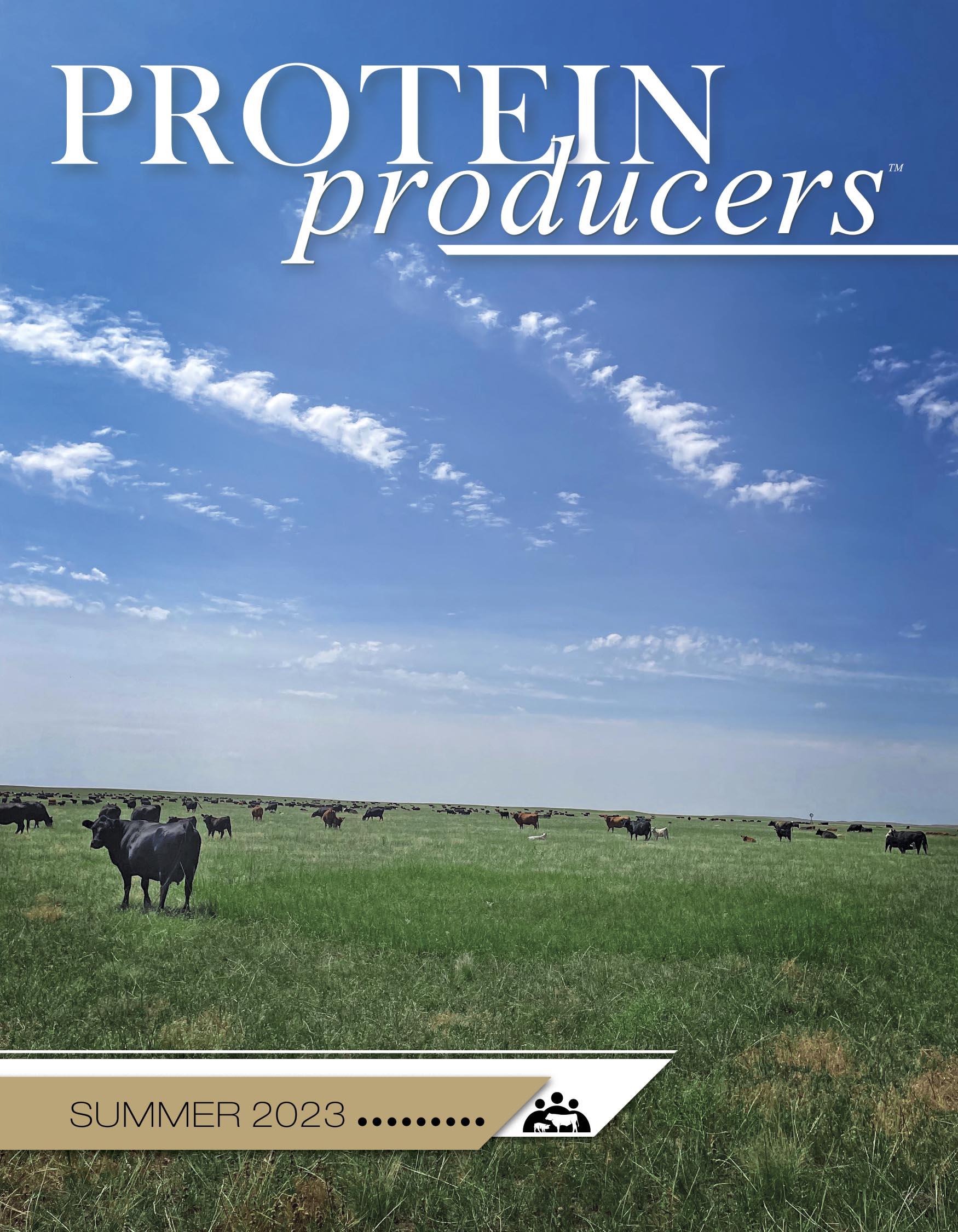

EDITORIAL TEAM: Brandi Bain, Darcy Howard, Lisa Taylor
SPONSORS
Thank you to all sponsors for supporting PAC & Protein Producers.
Animal Health International
Automated Dairy Specialists
Axiota Animal Health
Bimeda
Boehringer Ingelheim Animal Health USA
Daniels Manufacturing Co.
Diamond V
Huvepharma
Kemin Animal Nutrition & Health – North America

Lallemand Animal Nutrition
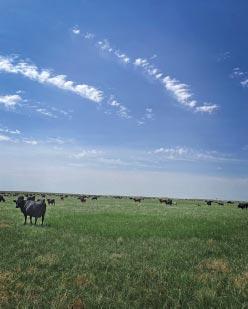
Merck Animal Health
MicroTechnologies
Newport Laboratories
Norbrook
Virbac
Zinpro
Zoetis
FRONT COVER PHOTO CREDIT
Thank you to Heidi Terrell for the photo from Terrell Ranch in Hay Springs, Nebraska.
summer 2023 | pacdvms.com 3 2023 Volume 11 Issue 2
TM
PROTEINproducers

Farm Creek Meats Utah
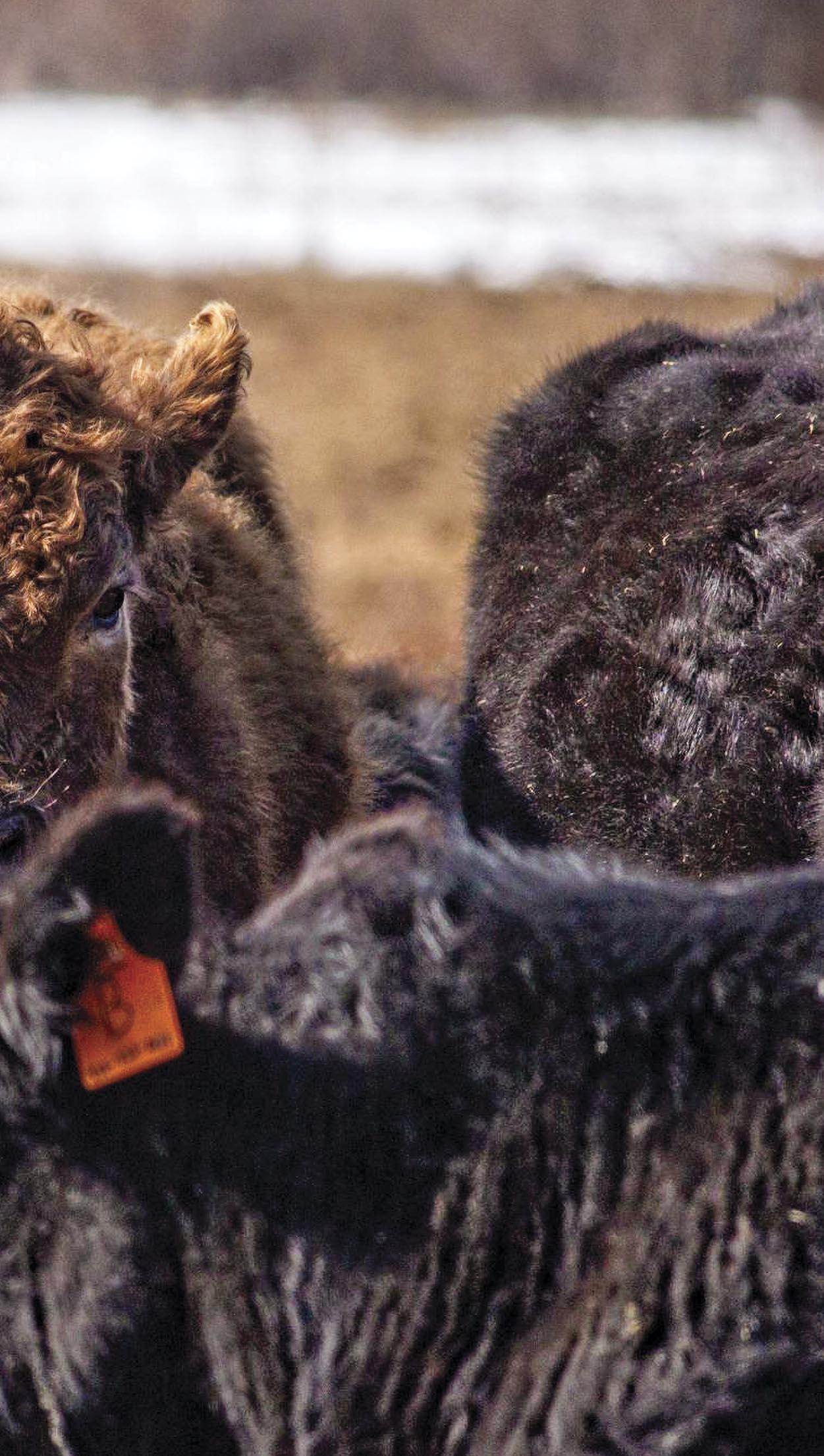
We want to showcase unique photographs from our readers here!
Please submit your photographs to protein.producers@ pacdvms.com.
summer 2023 | pacdvms.com 5
Photo Credit: Cornel Enslin
WELCOME
Welcome to the Summer 2023 edition of Protein Producers! As I write this, spring has finally sprung, and for many (if not all) of our producers, it did not come a minute too soon. A tough winter created many challenges for cattle and caregivers alike. As this winter fades away and last fall’s feeder cattle placements ship, we can take a brief moment to celebrate overcoming these challenges. I recently witnessed this firsthand at a family gathering, where I was able to see the gleam of joy in my dad’s eyes as family members complimented the pen of fattened cattle at the family farm. Whether it is a herd of 50 or more than 50,000, there are few greater feelings in this world than the knowledge of a job well done in producing a safe, wholesome protein supply.
As we start into the summer months, we will begin to encounter familiar issues. Summer weather forecast predictions show above average temperatures on the horizon. This issue provides timely and practical articles to address these challenges. Dr. AJ Tarpoff’s article on heat stress is a must-read. Dr. Dan Thomson dives into the complexity of atypical interstitial pneumonia (AIP) and what COVID can teach us about this disease. Dr. Matt Hille addresses the opportunities we have with diagnostic tools for BRD. There is a wealth of knowledge to gain from these experts and much, much more.
For those of you I have not had the pleasure to meet, I am one of PAC’s newest veterinarians. This summer marks two years with the PAC team, and what a fantastic time it has been! Working with our members, clients, and caregivers fulfills a dream I have had since I was 17. I have thoroughly enjoyed getting to know our veterinarians and producers, and the mentorship I have received from the experts in our group is second to none. One of these great mentors, Dr. Tom Noffsinger, received the 2023 BQA Educator of the Year Award. Check out the press release featured in this issue, and if you see him in his travels, congratulate him for an outstanding and well-deserved achievement. If we have not yet met, perhaps we will get the opportunity to connect at the PAC Summit for Industry Leaders on July 12 in Kearney, Nebraska. We have an outstanding lineup of speakers that will tackle real issues facing agriculture and protein production. We hope to see you there!
To all of our readers, I wish you all a safe and happy summer season!
Jared Bourek, DVM Production Animal Consultation Aurora, Nebraska
THANK YOU
We want to thank the industry partners, publications and associations who have pro vided content to Protein Producers . Also, a big thank you to our readers for supporting us, offering content and helping us improve each issue. We could not do any of this without all of you!
Disclaimer: The views, opinions, and information expressed in this magazine are those of the authors and do not necessarily reflect Production Animal Consultation's policy or position.


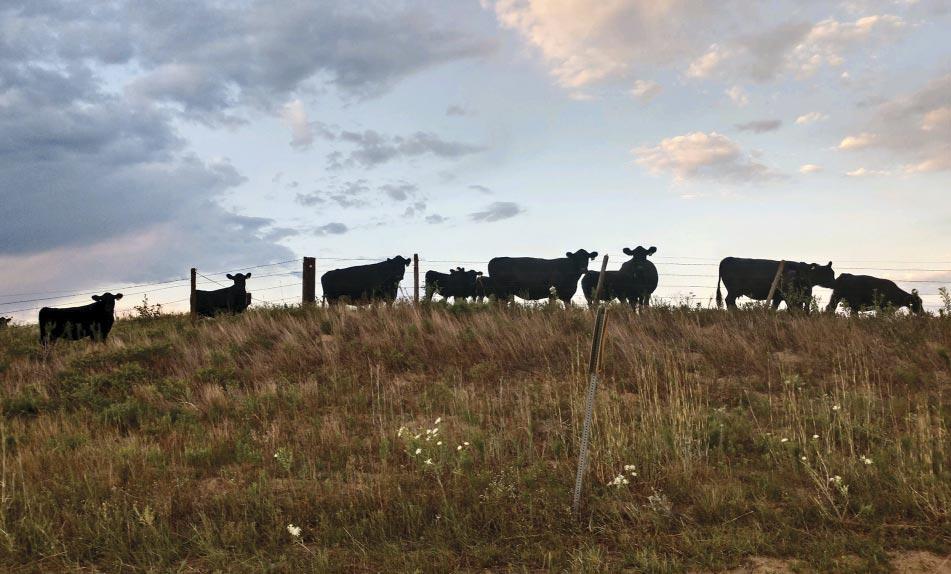


6 Welcome Jared Bourek, DVM 52 PAC Member Highlights: Richard Prather, DVM Brady Luke, DVM 58 Risa entre dientes desde Oz 64 Parable: Just Livin’ the Dream 70 The Pot Roast: Greek Steak and Pepper Kabobs 75 Chuckles from Down Under ❙ COW-CALF 10 Genomics for the Commercial Cattleman – It’s Easier Than It Looks 14 How Internal Parasites Impact Cattle Immunity and Vaccine Efficacy ❙ LEADERSHIP 20 Building Your Bench SUMMER 2023 contents 14 20 64 contents 8

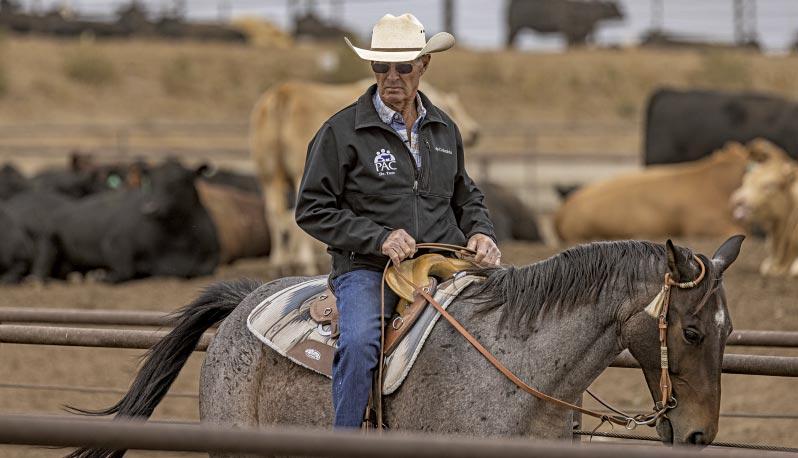


summer 2023 | pacdvms.com 9 ❙ FEEDLOT 26 Recent Advancements in Molecular Diagnostic Testing to Combat Bovine Respiratory Disease and Antimicrobial Resistance 32 Helping Our Animals Cope with the Summer Heat 36 AIP in Feedlots ❙ INDUSTRY 40 Feedlot Cattle Health Summit to be Held in Kearney, Nebraska on July 12 42 Don’t Let Them Steal Your Cheese: ‘Level Up’ Your Password Game 46 AASV Names 2023 Howard Dunne Memorial Award Recipient 48 Nebraska Veterinarian Honored with National Beef Quality Assurance 2023 Educator of the Year Award ❙ EN ESPAÑOL 54 – corrales de engorda Ayudando a Nuestros Animales a Sobrellevar el Calor del Verano 60 – corrales de engorda NIA en Operaciones de Corrales de Engorda 42 48 26 36 & 60
GENOMICS FOR THE COMMERCIAL CATTLEMAN –
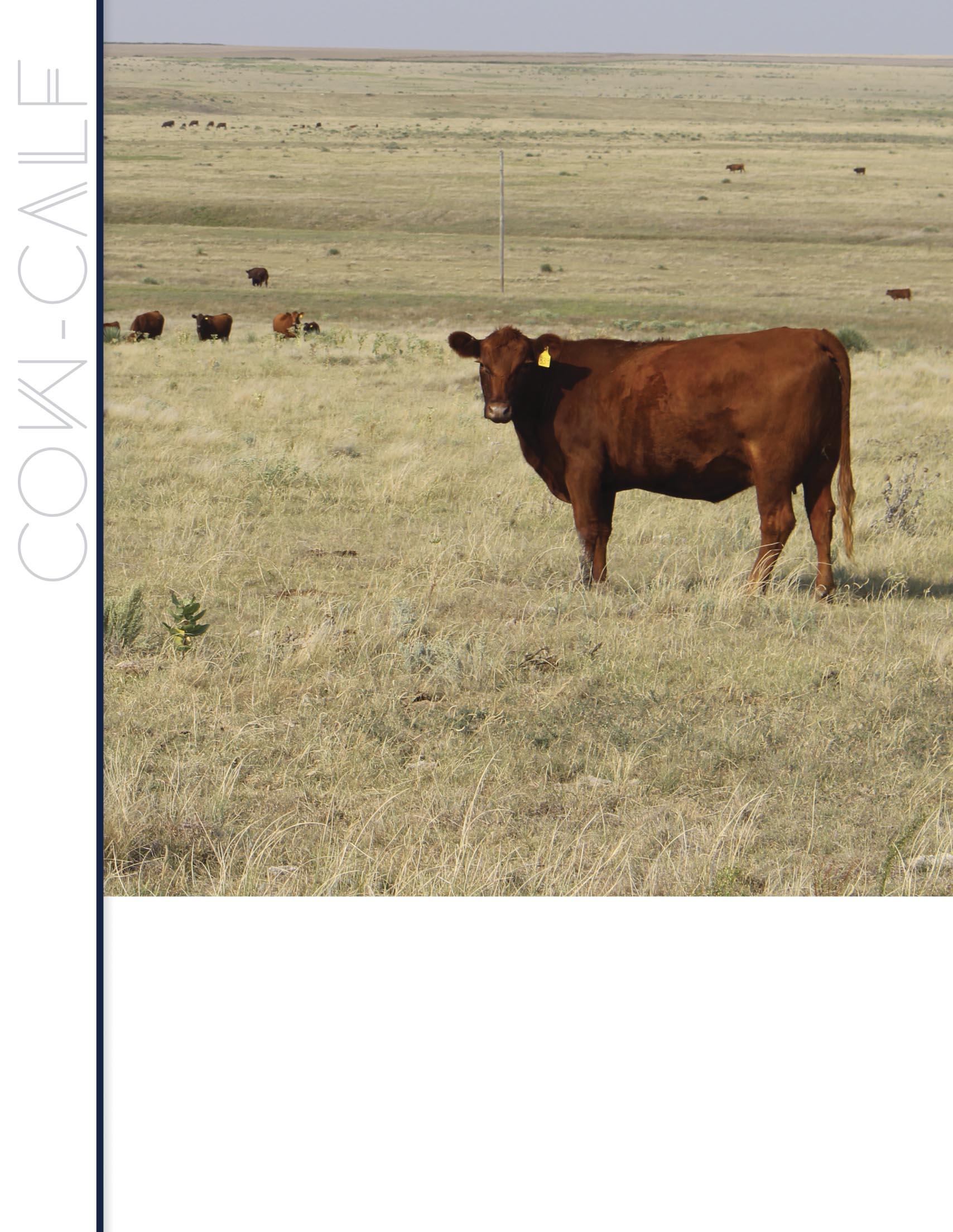
IT’S EASIER THAN IT LOOKS
By Jamie T. Courter, Ph.D., Neogen Genomics
Geneticists have a way of making things complicated, using phrases like “single nucleotide polymorphism”, “estimated progeny difference”, and the scariest of all“genomics”. Since its introduction into the seedstock industry, genomics has been a concept as abstract as the “cloud”. It is something that must be believed, not seen. It can’t be physically touched or placed into a pretty package. Increasing weaning weights in calves by using bulls with high growth potential is very visible but takes time to truly appreciate. Regardless, no matter how complex the wording or idealistic a concept, I think it is easy to understand that genomics is here to stay.

summer 2023 | pacdvms.com 11
New technology takes time to implement in the beef business, first by industry innovators and early adopters, then, based on proof of concept, by the early majority. This is about where the use of genomics has reached in the seedstock industry. Some producers have seen so much benefit from testing their bulls they are now testing females as well. But just as desirable genetics trickle down from the seedstock to commercial industry, the same thing is happening with the use of genomics –and we are just getting started.
So how can it be done? I believe there are three levels of investment in genomics in the commercial industry.
The first option, if you do nothing else, is to purchase bulls with genomically enhanced EPDs (GE-EPDs) from trusted seedstock providers – they have already removed a majority of the risk from your purchase. How frustrating is it to buy a bull only to have his numbers shift after progeny or relatives’ records appear in the evaluation? This concept is referred to as possible change. Purchasing bulls with GE-EPDs decreases the movement you could see in their numbers as more information enters the database. On average, you will do a better job of choosing the bulls to bring into your herd and their daughters will better match your objectives. This is a great starting point into the use of genomics, especially for someone trying to get their feet wet. However, the introduction of new commercial possibilities poses the question – can you do more? The answer is yes.
If you are an all-in, data-driven producer, you may be surprised to know that through programs like the
American Simmental Association’s Total Herd Enrollment (THE), commercial producers have access to a structured genetic evaluation. Those who record phenotypes and pedigrees now have the same access to EPDs and indexes purebred breeders do. Should you choose to invest in genomic testing, this information can also be included. This second option provides the most accurate prediction about a cow herd’s genetic merit and the best return on the investment taken to record such information. If you are a producer dedicated to data collection, this would be your best path forward.
Now, if you are a producer already buying great bulls but do not believe a structured genetic evaluation is the right fit, then using a commercial DNA test should be your next step. Recording phenotypes and pedigrees can be time and labor intensive. Another way to get “data” on an animal is through DNA. The concept is simple –take a sample at birth or preconditioning to help determine which calves inherited the “good” genes from their sires with GE-EPDs.
Believe it or not, this kind of genomic information has been available to commercial cattlemen for over 10 years, but adoption has been slow and is now starting to gain momentum. In August 2018, Neogen Genomics launched Igenity® Beef. Today, Igenity Beef reports an estimate of genetic merit for 17 maternal, growth, and carcass traits along with three indexes. Igenity Beef is based on the idea that although breeds of cattle are undoubtedly different in some ways, at a molecular level there are pieces of the DNA that have similar impact on many traits of interest. This concept also drives the genetic evaluation for breeds partnering with International Genetic Solutions (IGS), the only difference being that formal evaluation also includes phenotype and pedigree information. That is why the Igenity platform is the best commercial DNA profile available for crossbred beef cattle. The concepts are so similar that in August 2019, Maahdi Saatchi, Ph.D. and Dorian Garrick, Ph.D. published “MSRP: A Multi-Breed Selected Reduced Panel for Efficient Genomic Selection in Beef Cattle”, an Iowa State University Animal Industry Report, which outlines the inclusion of the same genomic information used for the IGS evaluation into the Igenity product line.
The report compares a crossbred product like Igenity Beef to a breed specific genomic prediction using 50,000 pieces of DNA (or SNPs) on 15,547 animals. As you can see in Table 1, across the ten traits listed, Igenity ranges from 80% to 92% as accurate as a breed specific prediction on the same animals.
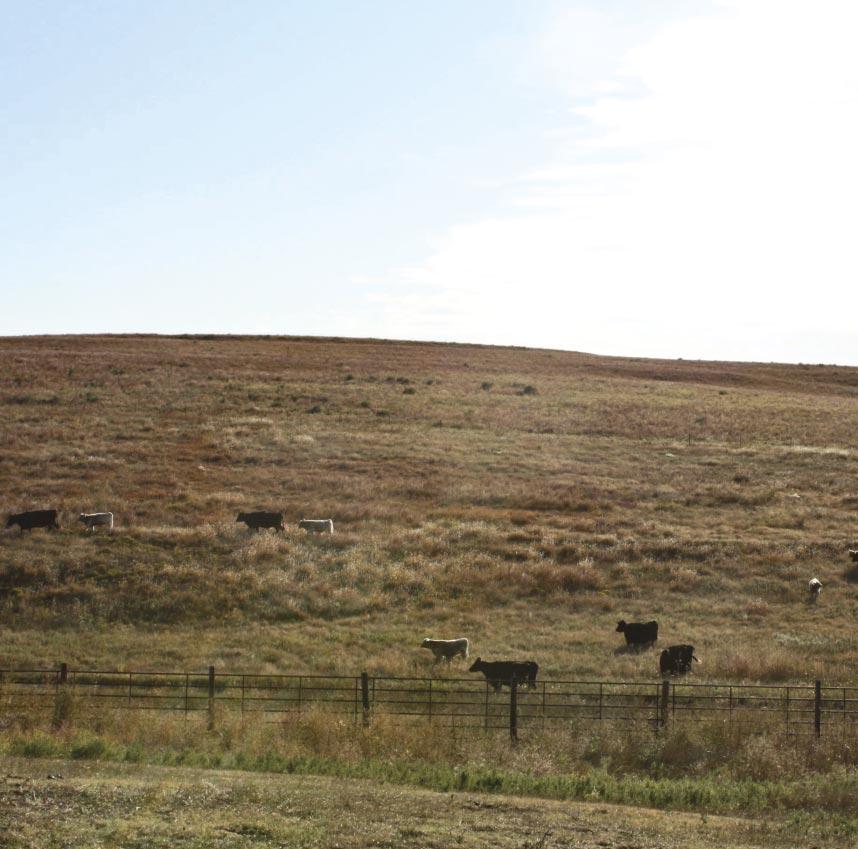
cow-calf 12
Adapted from Saatchi and Garrick (2019)
Whether you choose option two or three – it is easy to say using this technology, commercial cattlemen now have unprecedented insight into how well cattle will perform. With this information, cattlemen can:
1. Rank and select replacement heifers that meet their operation’s goals

2. Produce feeder cattle to fit their market
3. Obtain knowledge on the genetic merit of commercial bulls
4. Identify trait improvement needs for next year’s bull selection
Taking the next step towards incorporating genomics isn’t terribly difficult. It just takes patience, commitment, and time to fully reap the benefits of genetic change.
Originally from Henderson, North Carolina, Jamie Courter fi rst became interested in genetics while obtaining an Animal Science degree from North Carolina State University. Following those passions, she obtained a Masters and Doctoral degree in Animal Breeding and Genetics from South Dakota State University and the University of Nebraska Lincoln, respectively. While participating in various research projects, she found her passion in educating producers and industry professionals to understand and implement genomic technologies. Serving as Beef Product Manager for the past four years, Jamie assisted with the development and launch of multiple products geared towards the genetic advancement of registered and commercial beef cattle across the globe, all the while educating producers on how to best implement the technology to increase their profitability. It is the latter portion of this role that she will be taking with her along with the new responsibilities as Technical Services Manager. Jamie is excited for the new challenges and to be continuing with driving innovation within the bovine industry.

summer 2023 | pacdvms.com 13
New technology takes time to implement in the beef business, first by industry innovators and early adopters, then, based on proof of concept, by the early majority.
▲ Birth weight 93 84 81 76 100 93 Calving ease direct 85 90 85 93 96 91 Carcass weight 91 - 90 92 87 87 Fat thickness 81 83 70 - 57 105 Heifer pregnancy rate - - - - 108Marbling 95 73 87 71 95 99 Rib eye area 85 83 51 79 99 92 Stayability - - - - 94 88 Weaning weight 91 84 87 77 84 91 Yearling weight 97 84 91 80 84 83 Average 90 83 80 81 90 92 Trait
Table 1: The efficiency of Igenity (MSRP) vs. 50K in 6 US cattle breed association populations.
Black Angus Hereford Gelbvieh Limousin Red Angus Simmental
HOW INTERNAL PARASITES IMPACT CATTLE IMMUNITY AND VACCINE EFFICACY
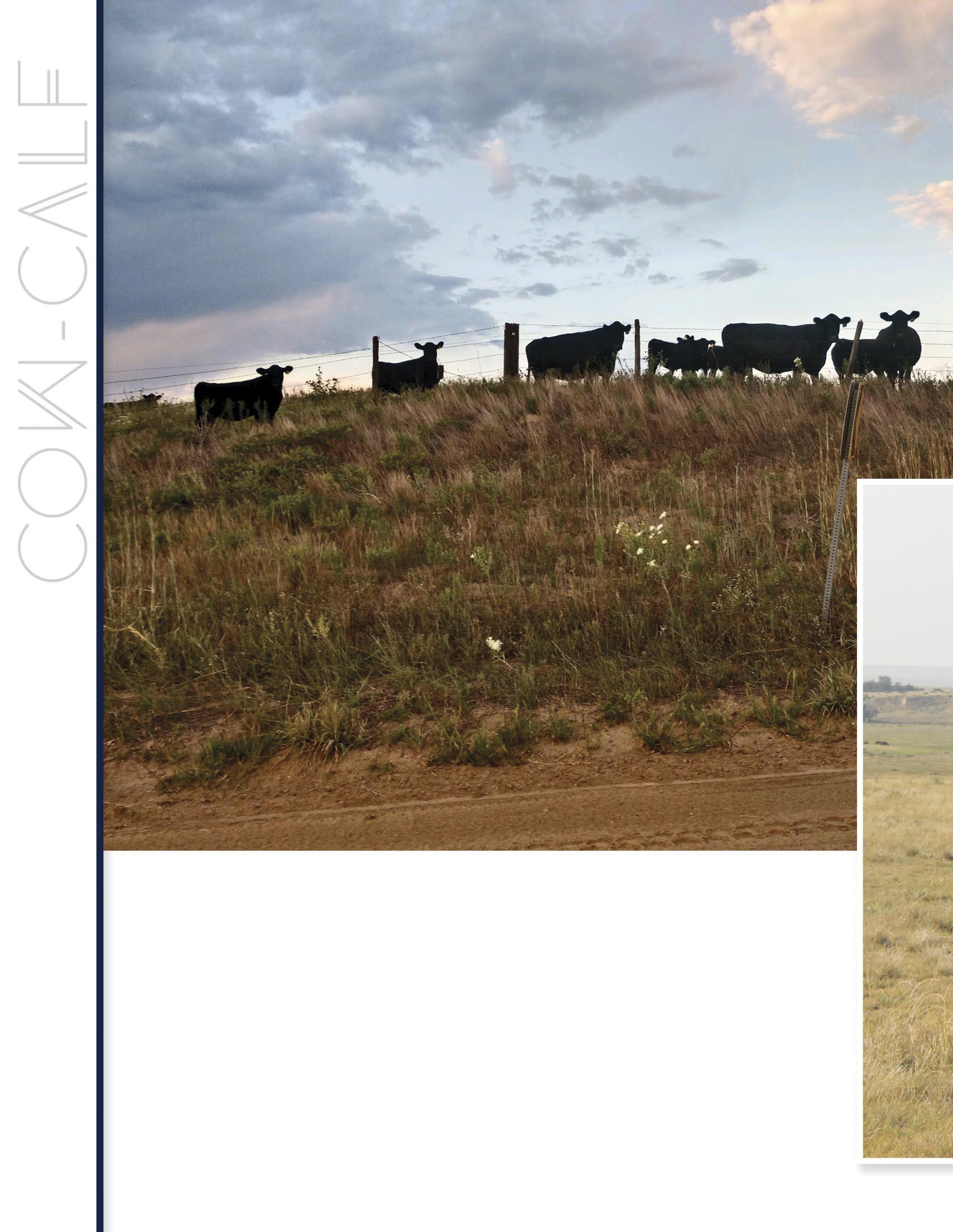 By Grant Crawford, Ph.D., Merck Animal Health
By Grant Crawford, Ph.D., Merck Animal Health
Most cattle producers associate internal parasites with a reduction in feed intake. Indeed, the No. 1 effect of internal parasites is a decreased appetite, which means there are fewer nutrients for an animal to absorb. On top of that, internal parasites have a direct effect on nutrition absorption because they cause inflammation in the gut.
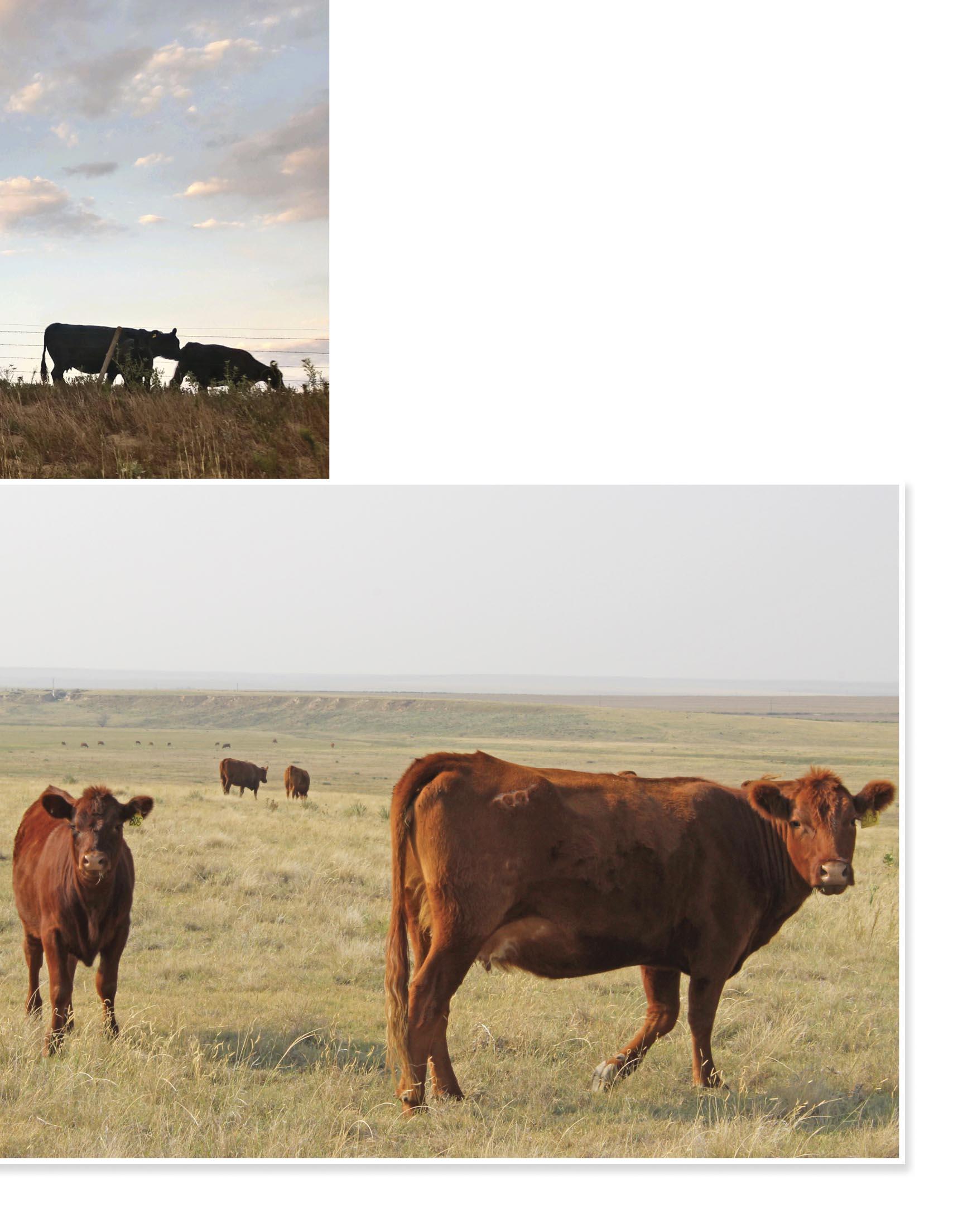
summer 2023 | pacdvms.com 15
This reduction in nutrient intake and absorption is detrimental to all cattle but especially highly stressed animals. They typically already have lower feed intake without the added stress of an internal parasite challenge.
Internal parasites affect the nutritional status of the animal in three ways: they decrease feed intake, they decrease nutrient absorption and they increase nutrient requirements. These effects of internal parasite infections on the animal’s nutritional status are important because they impact and compromise every aspect of biology – including growth, milk production, immune function and reproduction.
Cattle producers put a lot of effort and resources into vaccinating their cattle and offering high-quality feed and mineral programs. These efforts and resources are not fully utilized and can be wasted if cattle are parasitized.
Even a low number of internal parasites can affect cattle health and performance. Cattle with relatively low parasite burdens (324 total slaughter worm counts) have been shown to have depressions in feed intake of up to 3.2%, while cattle with high parasite burdens (11,164 total slaughter worm counts) have been shown to have depressions in feed intake of up to 7.8%.1,2
Impact on the immune system
Internal parasitic worms burrow into the animal’s gastric glands and damage the gut lining. This causes the immune system to react and put its effort toward fighting the threat.
Th1 and Th2 – both types of helper cells – play an important role in immunity. The Th1 response is the immune system’s response to a viral or intracellular infection. A Th2 response is not necessarily specific to parasites but commonly associated with them. A Th2 response can block a Th1 response.
If there’s enough of a worm burden that a Th2 immune response occurs, the immune system will focus almost solely on trying to get rid of the parasites and will not be able to handle an intracellular invader like coccidiosis, pinkeye or another type of viral outbreak. It predisposes cattle to attacks from viruses, and, of course, viruses can open the door to bacterial infections.
Younger animals, such as suckling calves, weaned calves, replacement heifers or stocker cattle, are much more susceptible to parasites because they don’t have any immunity built up against them. This will develop as an animal gets older, but cattle are never fully immune to parasites.
Deworming prior to vaccination
In much the same way as a virus does, a modified live five-way vaccine is ideally going to trigger a Th1 response. If cattle are parasitized and a Th2 response is triggered, this can impact the animal’s ability to positively respond to the vaccine.
Vaccine labels say “effective for the vaccination of healthy cattle.” It is important to deworm cattle ideally one to two weeks prior to vaccination and give them time for their immune system to respond.
Several studies have demonstrated the benefits of proper deworming on the health status of an animal. Research shows that calves dewormed two weeks prevaccination maintained lower rectal temperatures following an IBR challenge than those dewormed at vaccination or not dewormed at all.3 This means they were better able to withstand the disease challenge than those who had not been dewormed.
An Oklahoma trial compared the effects of deworming calves on pasture during the suckling phase and after weaning in the stocker phase.1 Morbidity was highest in

cow-calf 16
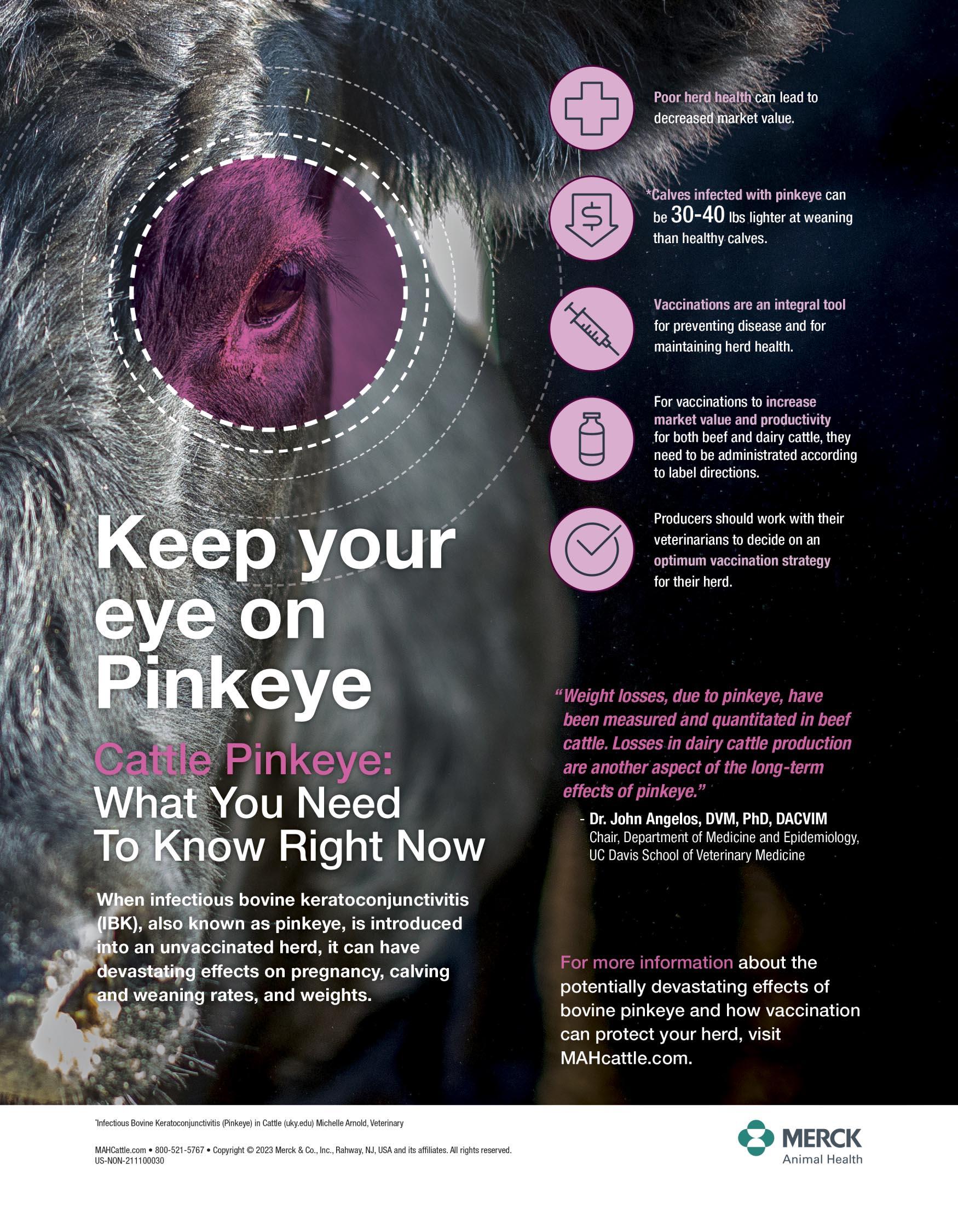
cattle that were never dewormed, and lowest in cattle that were dewormed in both phases. Additionally, cattle that were never dewormed were treated more times for respiratory disease than those that were dewormed in either or both phases.
Summer deworming can be easy
Deworming cattle ahead of vaccination doesn’t have to mean a trip through the chute or be labor intensive. Using feed and mineral forms of dewormers – such as range cubes, dewormer blocks or mineral – require relatively little time and labor and are highly effective.
This is important to consider, especially mid-summer. If dewormed at turnout, cattle will start picking up parasites almost immediately once they are on green grass, and those parasites can start doing damage almost immediately. If cattle are not dewormed until they come off the pasture in the fall, they have several months of picking up worms and damaging their gut.
It also is important to deworm calves at cow side. At about six to eight weeks of age, calves start ruminating and are at high risk of internal worms. Deworming at earlier stages of infection can result in improved weaning weights. For spring calving herds, it typically is good to deworm calves six to eight weeks after turnout onto pasture.4
Parasite control best practices
There is not always a visual sign of parasitism. After deworming, we often don’t know how effective the deworming was and the amount of time before reinfestation occurs.
A fecal egg count reduction test (FECRT) is the standardized diagnostic tool to test manure for the presence of internal parasites’ eggs. It is important that 20 samples are taken both at treatment and 14 days post-treatment. A successful deworming should result in a 90% or greater reduction in parasite eggs in feces.5
You can request a free FECRT kit from Merck Animal Health. Work with your veterinarian and animal health representative to assess your deworming program and find the timing and formulations that work best for your operation.
References
K. C., Huse, S., Wray, M. I., Brandt, R. T., Hutcheson, J. P., Nichols, W. T., Taylor, R. F., Rains, J. R., McCauley, C. T. Pasture

deworming and (or) subsequent feedlot deworming with fenbendazole. I. Effects on grazing performance, feedlot performance and carcass traits of yearling steers. The Bovine Practitioner. 2000. 34(2), 104-114.
2. Taylor, R. F., D. H. Bliss, R. T. Brandt, Jr., W. T. Nichols, J. R. Rains, J. P. Hutcheson, and R. A. Smith. 2000. Pasture deworming and (or) subsequent feedlot deworming with fenbendazole. II. Effects on abomasal worm counts and abomasal pathology of yearling steers. Bovine Pract. 34:115-123.
3. J. S. Schutz, J. A. Carroll, L. C. Gasbarre, T. A. Shelton, S. T. Nordstrom, J. P. Hutcheson, H. Van Campen, T. E. Engle. Effects of gastrointestinal parasites on parasite burden, rectal temperature, and antibody titer responses to vaccination and infectious bovine rhinotracheitis virus challenge. Journal of Animal Science, Volume 90, Issue 6, June 2012, Pages 1948-1954, https://doi.org/10.2527/jas.2011-4059.
4. Kevin Gould, M. S. U. E. (2022, January 21). Beef cattle deworming strategies. MSU Extension. Retrieved May 18, 2022, from https://www.canr.msu.edu/news/beef_cattle_dewor ming_strategies.

5. Dobson R, Jackson F, Levecke B, Besier B, et al. Guidelines for fecal egg count reduction tests (FECRT). World Association for the Advancement of Veterinary Parasitology (WAAVP) (2011) Proceedings: 23rd International Conference of the World Association for the Advancement of Veterinary Parasitology.
Grant Crawford, Ph.D., Associate Director, Cattle Technical Services, with Merck Animal Health provides technical support for beef producers, veterinarians, and nutritionists in the Upper Midwest. Prior to joining Merck Animal Health in 2015, Dr. Crawford worked as a feed company technical nutritionist for 3.5 years and spent fi ve years in beef cattle extension and research at the University of Minnesota.
1. Smith, R. A., Rogers,
cow-calf 18

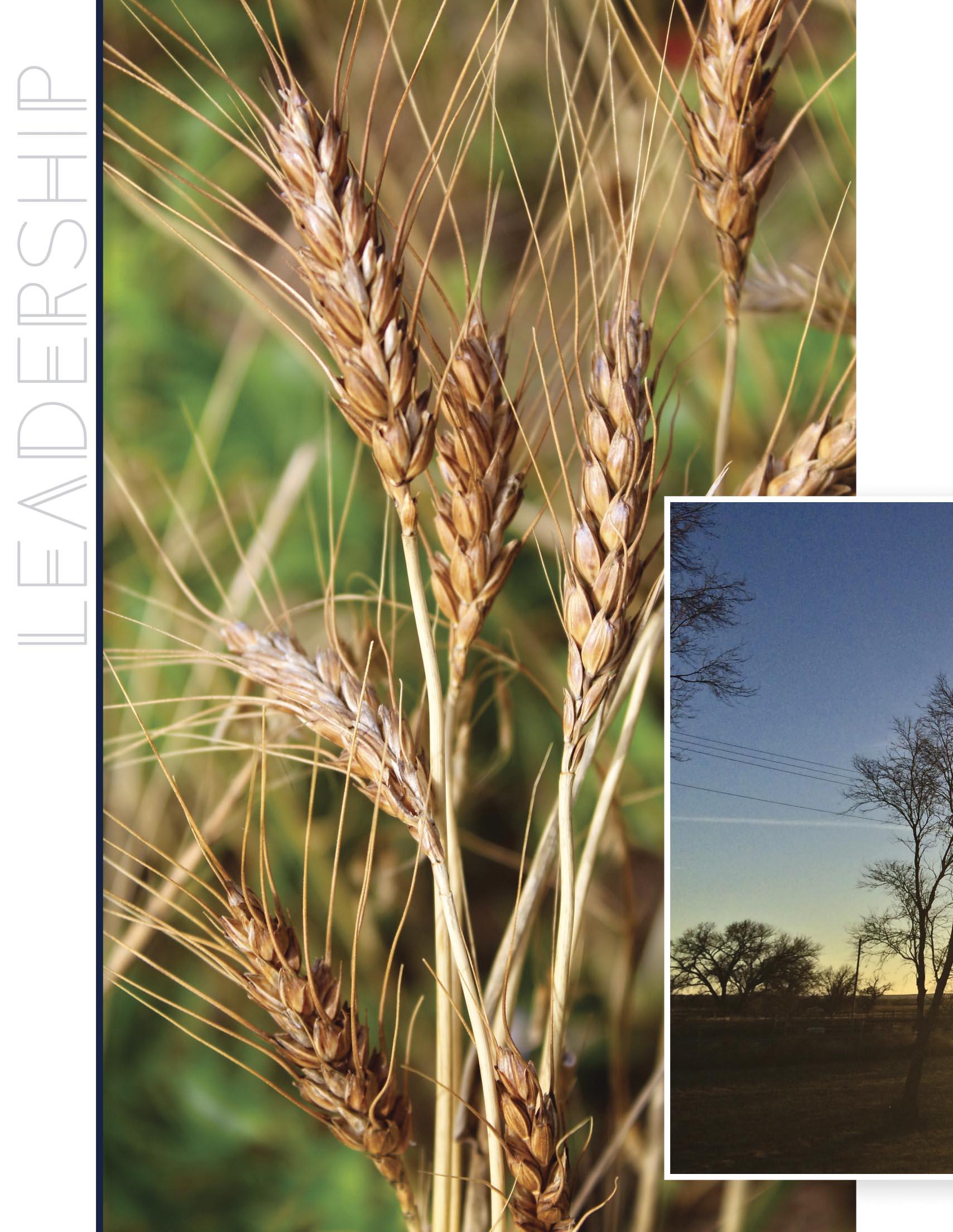
BUILDING YOUR BENCH
By Nels Lindberg, DVM, Production Animal Consultation
Leading a team or an organization can be one of the most fulfilling purposes of your life. Getting the honor to do so should never be taken lightly because you have the ability to influence your team in a positive or negative manner each day. The next step is to “build your bench” so that not only do you and your family enjoy your achievements, but your team and organization also go far beyond where you ever dreamed they would! You are only as good as the leaders and the team that you build. We must be intensely focused on building, growing, and nourishing the next generation of leaders for our future world, not today’s world.

summer 2023 | pacdvms.com 21
The following five points are key to successfully building your bench and ensuring your team will be fine when you are gone. We as leaders must be humble enough to venture down this vulnerable road because our organizations must be able to go on without us.

1. Understand the law of the lid. The law of the lid is one of John Maxwell’s 21 Irrefutable Laws of Leadership. It means that you (the leader) are the limiter, or the lid, to your team. Your team can only go as far as you can grow. Your leadership capacity typically grows with experience and years in the trenches, but we as leaders also need to put in the work to learn better ways to lead, communicate, create healthy conflict, have crucial conversations, and improve the culture through non-negotiable core values. Most of us never had any formal education in these leadership areas, yet we all have opportunities to learn more. Be intentional about adding value to yourself, so that you in turn can add value to those you lead. The lower your ability to lead, the lower the lid on your potential and your team’s potential. The higher your ability to lead, the higher the lid on your potential and your team’s potential.
2. Create clarity in mission, vision, values, and purpose. Leaders will come and go over time, but we must ensure the mission, vision, values, and purpose are deeply engrained in the organization. We want our next generation of leaders to be
tremendous decision makers. How many times have you asked yourself what a former owner, leader, or mentor would do? Leaders make decisions virtually every minute of the day. Have you educated the next generation on how to make sound decisions? The most important component in helping them make sound decisions is having clarity in the mission, vision, values, and purpose of the organization. It is the values that provide explicit direction or guidance to answer virtually any question that may arise. Once we have clarity in these four things, making any decision becomes easier.
3. Identify the workers and the helpers. Stop focusing on the declining nature of the human work ethic. Focus on those that do work hard and build those leaders. Doing this day after day will begin to attract other incredible young folks that believe in the same intense work ethic and culture of execution to your organization. You may be reading this now and thinking, “I really don’t have anyone on my team I can focus on to build my bench.” If that is the case, take another, deeper look at the people on your team. They may be there; you just have not invested in them enough to know. Always be thinking critically about this, hiring for this, and leading for this. We must also look to lead those on our team in the direction of our values and hard work. If you want to influence
leadership 22
the younger generation on your team long term, you must show them respect. We often fail by thinking that they should respect us and then after they show us they can work hard and get the job done, we will respect them. But it does not work that way anymore. We must show them a basic level of respect and trust by including them, asking them questions, and letting them share some of their thoughts about what we are doing every day. Do these things, and you will find your bench!
4. Have the actions of a courageous, understanding, compassionate, resolute leader. More is caught than is taught. We can talk about leading all we want, but are we modeling the daily life of a great leader and mentor? You cannot simply teach these bedrock objectives and expect the next generation to execute them. We must be an example for the whole team through our actions. To better ensure you are doing this, ask yourself daily, if not multiple times a day, “Am I exhibiting the traits of a leader?” You must be courageous
and resolute in doing this, so that these actions and traits have a contagious effect on others. Ask yourself that very same question after any intense moment, conflict, or crucial conversation. It is in those intense moments we as good, solid leaders still often fail. These moments test all of us, and we must step back to reflect and examine how we did, identify what we did wrong, learn from our mistakes, and clean up the mess. If we said the wrong thing or if we acted in a manner not worthy of a leader, we must step up and take responsibility for our actions right away. Be the example in all that you do!
5. Make daily deposits into the relationships with your bench. In my younger years, I was very selfish. Life was all about me, having fun, working hard, achieving my goals, and probably a few too many beverages. The average human brain does not fully develop until about 22 or 23 years of age. I was 32 when my kids were born, and it was only then that I finally realized life was no longer about me! It was about my kids and my marriage. I do

summer 2023 | pacdvms.com 23
regret my shallow mind and actions for all those years, but those years also make me who I am today. Today I am devoted to pouring value into others to see them achieve the best versions of themselves possible. We as leaders have the noble responsibility to deeply care for those we are entrusted to lead. The greatest way we can care for our people is by pouring into them all that we can. If we want to build our bench, we must first fulfill the needs of those we lead. We must make it a routine habit to add value to the lives of the people on our teams by thinking of ourselves and our needs less often and focusing on how we can help others and prioritize their needs. Seek out those who are coachable and work hard, and make daily intentional deposits into them just like you do your 401(k) or your cattle account. We always focus on results, but I am asking you to focus on relationships!
If you are reading this, you are likely thinking about the legacy of your team or organization. You may be thinking about the next generation of leaders in your organization and how to grow them. I hope this gives you some information to help ignite this process. If you serve your people, create a transparent mission and values, lead by example, and focus on pouring into those who are coachable and talented, you will build your bench! If you do this, they will do more coaching than you! Just ask Kansas State University Men’s Basketball Coach, Jerome Tang!

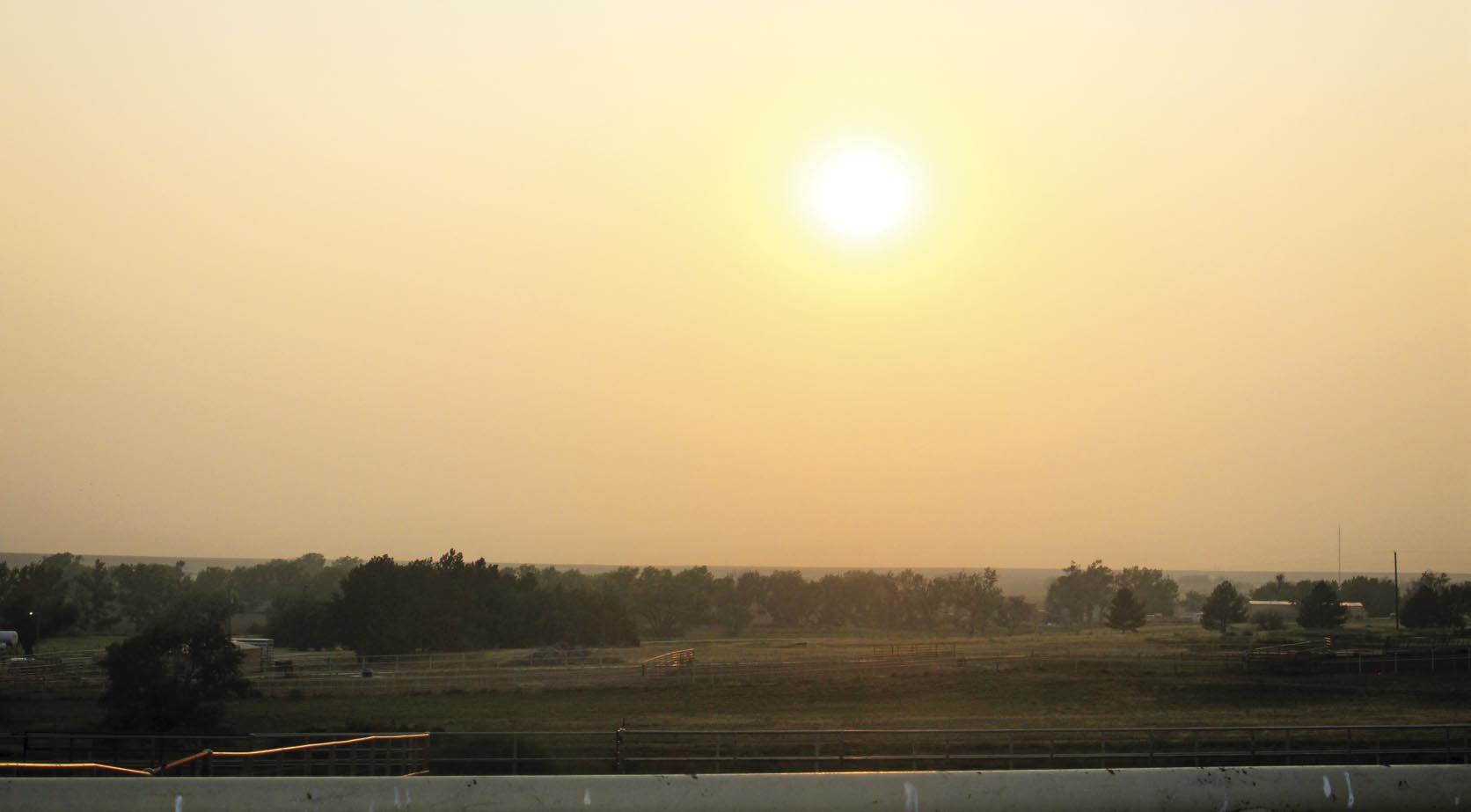
“…we got a ton of faith in each other. They have faith in me. I got faith in every one of these guys right here. They probably did more coaching than I did. I just try to love them, man. And when you love people, it’s amazing what you can accomplish.”
– Jerome Tang
Dr. Nels Lindberg is a people coach, team coach, business coach, and keynote speaker, available virtually or in person. If you have any interest in these opportunities, please reach out to his of fi ce at 620-792-1265 and visit with his right-hand lady, Jill.

leadership 24

RECENT ADVANCEMENTS IN MOLECULAR DIAGNOSTIC TESTING TO COMBAT BOVINE RESPIRATORY DISEASE AND ANTIMICROBIAL RESISTANCE
 By Matt Hille, DVM, MS, PhD, University of Nebraska-Lincoln
By Matt Hille, DVM, MS, PhD, University of Nebraska-Lincoln
The issues surrounding the prevention, diagnosis, and treatment of bovine respiratory disease (BRD) are certainly nothing new to readers of Protein Producers. BRD is the most commonly diagnosed disease process in cattle, and the most costly, with industry wide economic losses due to BRD estimated at over $1 billion. 3 The difficulties surrounding BRD management are in large part due to the wide range of factors that determine disease susceptibility. These include:
1) animal factors such as age, immune status, and stress;
2) environmental factors such as weather and animal density; and
3) pathogen characteristics including numerous types of both viruses and bacteria. Traditional dogma assumes the majority of cases are the result of initial viral infections that suppress the calf’s immune system allowing for bacterial prolife ration and subsequent disease . However, it is clear that bacteria can also be primary pathogens without virus involvement.

summer 2023 | pacdvms.com 27
Something readers of this magazine may be less familiar with is the growing concern that strains of bacterial pathogens (both animal and human) are increasingly showing resistance to antibiotics that we have relied heavily on for treating diseases such as BRD in the past. The discussion of antimicrobial resistance (AMR) is becoming more and more popular among veterinarians, microbiologists, industry leaders, and government officials who are concerned about future ramifications on not only animal health but human health. Overuse of antibiotics is assumed to play a role in the development of AMR. The relative impact of antibiotic use in food animals and how this relates to the increased number of AMR bacteria we are seeing on the human side is somewhat controversial (and a much longer discussion for another day), but it is safe to assume that it likely plays at least some role. The concern over AMR is the driving force behind the implementation of the veterinary feed directive (VFD) in 2017 and the elimination of over-the-counter sales of many popular antibiotics taking effect in June of this year when prescriptions will be required for these drugs moving forward. Responsible, or judicious, use of antibiotics by producers and veterinarians will be important as we move forward, and being aware of this issue is crucial. Judicious use of antibiotics in animals can be broadly summarized as using antibiotics only when they are indicated, at the appropriate dose and route of administration, for the appropriate period of time, and
choosing the correct class of antibiotic for the given disease process or pathogen.1 Following these principles will eliminate money wasted on needless antibiotic usage, increase the likelihood of a positive treatment outcome, and minimize the likelihood of or need for additional future regulations.
Diagnostic tests for BRD and AMR have improved in the recent past with the development of polymerase chain reaction (PCR) testing availability. Traditionally, bacteria were grown in a laboratory and diagnosed to the species level based on how the bacteria grew in a number of different media environments. Then, the bacteria were grown in the presence of a number of antibiotics to determine which antibiotics inhibited growth and therefore might make good treatment options for the particular case. The advancement of PCR technology has decreased the turnaround time and dramatically increased the sensitivity of bacterial testing compared to culture alone. That is, we can now have results much quicker and we can detect much smaller amounts of a pathogen since we are amplifying and detecting the DNA itself without relying on the bacteria to grow. Another benefit is we can determine the quantity of relative pathogens in the sample using many of these newer PCR tests. This is an important advantage since we can occasionally find BRD-associated bacteria in the respiratory tract of healthy cattle, but knowing there is an exceptionally large amount in a diseased calf lung is a strong indication that the particular bacteria is playing a role in disease.
Culture is still widely used in veterinary diagnostic laboratories and remains the gold standard for identifying and determining the antimicrobial susceptibility of BRD bacterial pathogens. However, characterization and detection of the genes in BRDassociated bacteria that allow for resistance to two common classes of cattle antibiotics has allowed for even more refined PCR testing. In 2021, a new PCR test was developed that can detect some of the bacterial genes that confer resistance to macrolide (i.e., Zuprevo®, Draxxin®, Zactran®, Micotil®) and tetracycline (i.e., LA 200) antibiotics.2 This new PCR test dramatically decreases the time needed for antimicrobial sus-
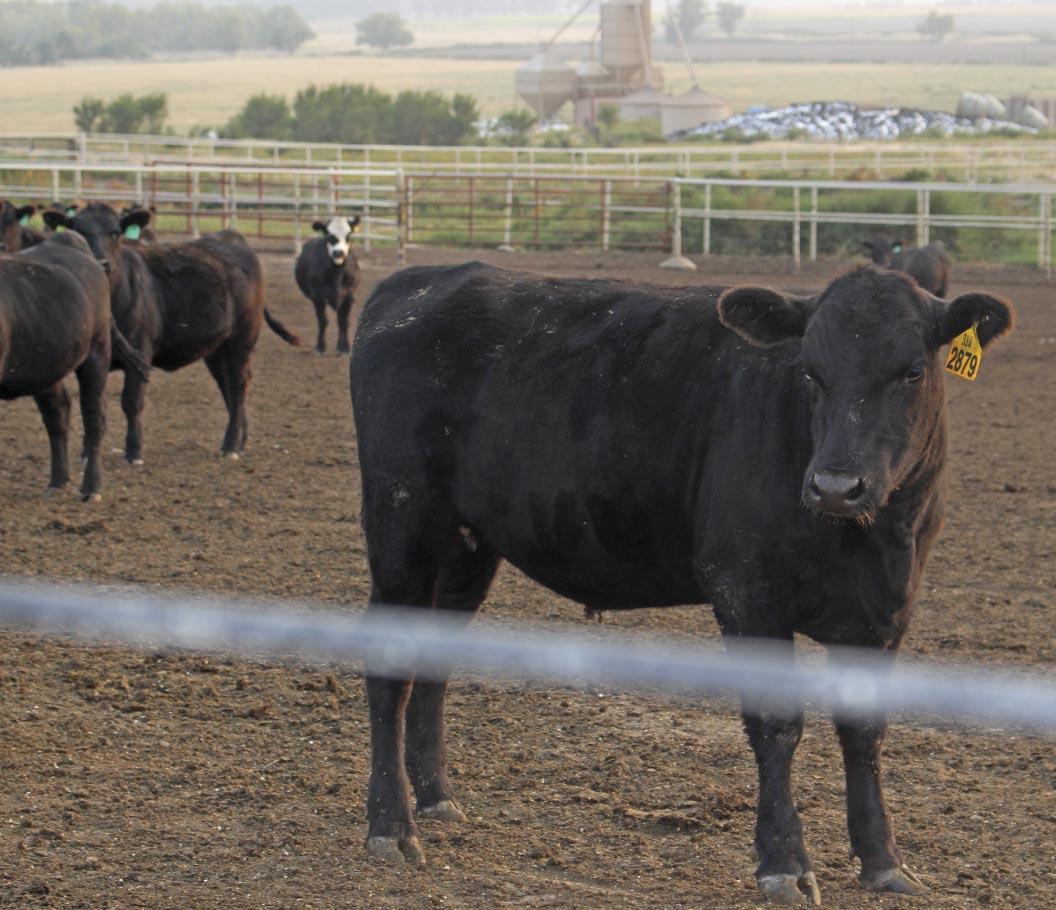
feedlot 28
ceptibility results since culture is not required. At the same time, the accuracy of results concerning resistance is comparable to the gold standard method of culture. This new PCR test for AMR genes to macrolide or tetracycline antibiotics is quantitative and can be performed on either lung tissue from a dead animal or a nasal swab in a live animal.
I believe incorporating the new AMR PCR testing into the management of BRD can be potentially beneficial to beef producers and their veterinarians in two primary ways:

1. Confirming the likelihood of efficacy for antibiotics being used to treat BRD during an outbreak.
Respiratory outbreaks can develop quickly, and prompt treatment is often of critical importance to minimize death losses. Therefore, experience and knowledge of antibiotics usually guides veterinarians to prescribe specific antibiotics in certain situations. This is true for individual animal treatment protocols or for mass medication of a large group of calves. If a macrolide or
tetracycline class of antibiotic is used, the AMR PCR test can be useful to confirm that the bacterial component of the current BRD outbreak does not possess large numbers of antibiotic resistant genes for these drug classes. Lung tissue from dead calves can be used to test for these genes when assessing a treatment protocol. In the case of mass medicating a group of calves, if a macrolide or tetracycline is chosen, nasal swabs can be obtained from live animals during processing to gauge the likelihood of antibiotic resistance in the specific cohort. If there are high numbers of resistance genes present in the sample, medicating the group with a different class of antibiotics may be indicated if clinical signs start to suggest a treatment failure.
2. Choosing drugs to be used for metaphylaxis. Administering antibiotics to all cattle in a specific cohort regardless of their current disease status is referred to as metaphylaxis and this tactic is commonly used to prevent disease, particularly in cattle at higher risk for developing
summer 2023 | pacdvms.com 29
BRD (freshly weaned, multiple ranch source, long-haul, etc.). As a general rule, macrolide antibiotics tend to provide therapeutic levels of the drug in tissues for longer periods of time compared to other classes of drugs. Therefore, they make good candidates for metaphylaxis and are one of, if not the most common class of drug used for this purpose in feedlot cattle.
If it is anticipated that a macrolide or tetracycline antibiotic will be used for metaphylaxis in an incoming group of cattle, deep nasal swabs can be obtained at the auction market or ranch of origin and submitted for testing before the animals arrive. In this scenario, the veterinarian and feedlot personnel will have results as to the relative amount of antibiotic resistance genes present in the samples ideally before the cattle arrive, and certainly shortly after arrival in a worst-case scenario. If there appear to be high levels of macrolide resistance genes in these particular cattle, it may be indicated to choose another antibiotic class for the metaphylaxis.
The AMR PCR test has the potential to be a valuable tool in the management of BRD, but it is not without its own limitations. The most obvious limitation is that we are currently only able to test for resistance genes to two antibiotic classes. While these two classes represent a large percentage of antibiotics used in cattle, there are other important classes which will continue to require traditional culture methods for AMR susceptibility testing such as the fluoroquinolones (i.e., Baytril®), cephalosporins (i.e., Excede®), and florfenicols (i.e., Nuflor®) among others. Another limitation to the AMR PCR test is that we do not know precisely what level of antibiotic resistance genes in a given sample is significant in terms of predicting treatment failure in the field. It is safe to assume that the higher the amount of resistant genes in a sample, the higher likelihood there is for clinical resistance, but a precise level where there is cause for concern is currently unknown. Therefore, to most efficiently use the assay in its current form, it would be worthwhile to sample a random subset of calves to get an overall gauge on the magnitude of resistant genes present among the group to help guide drug choices. Finally, the AMR PCR does not detect all genes associated with macrolide or tetracycline resistance. Therefore, it is recommended to be used in conjunction with culture-based methods since there are other genes that
may be conferring resistance in a given strain. That being said, detecting high levels of resistance genes via the AMR PCR in combination with pathogen detection can be useful clinically.
The AMR PCR test is currently offered at the Nebraska Veterinary Diagnostic Center (NVDC). It is likely other diagnostic laboratories will offer this service in the future. At the NVDC, the test can be ordered alone or along with multiplex PCR testing for the most common viral and bacterial pathogens and culture as a “complete BRD PCR test” for a reduced cost compared to ordering each test individually. The turnaround time for results is 48-72 hours under normal conditions and the test can be performed on lung tissue, swabs, or previously isolated strains of bacteria.
References
1. Judicious therapeutic use of antimicrobials: American Veterinary Medical Association, 2023: https://www.avma.org/resources-tools/avmapolicies/judicious-therapeutic-use-antimicrobials.

2. Dutta E, et al. Development of a Multiplex Real-Time PCR Assay for Predicting Macrolide and Tetracycline Resistance Associated with Bacterial Pathogens of Bovine Respiratory Disease. Pathogens 2021;10.
3. Griffin D, et al. Bacterial Pathogens of the Bovine Respiratory Disease Complex. Veterinary Clinics of North America: Food Animal Practice 2010;26: 381-394.
Dr. Matt Hille is an assistant professor at the University of Nebraska-Lincoln where he serves as a diagnostic pathologist and extension veterinarian at the Nebraska Veterinary Diagnostic Center. He was a cow/calf and feedlot veterinarian in South Dakota for a number of years prior to pursuing a career as a diagnostician. His diagnostic and research interests are focused on infectious diseases of food animals with a particular interest in beef cattle. He is a graduate of Iowa State University (DVM), the University of Wyoming (M.S.) and the University of Nebraska (Ph.D.). Matt and his wife, Katie, live in Lincoln, Nebraska, with their three children where they attend as many Husker football games as possible.

feedlot 30

HELPING OUR ANIMALS COPE WITH THE SUMMER HEAT
By A.J. Tarpoff, DVM, MS, Kansas State University

Cattle are highly adaptable and can thrive in almost any environment on Earth. That being said, environmental stressors can heavily impact cattle health. During the summer months, heat stress is often our focus to improve cattle comfort.
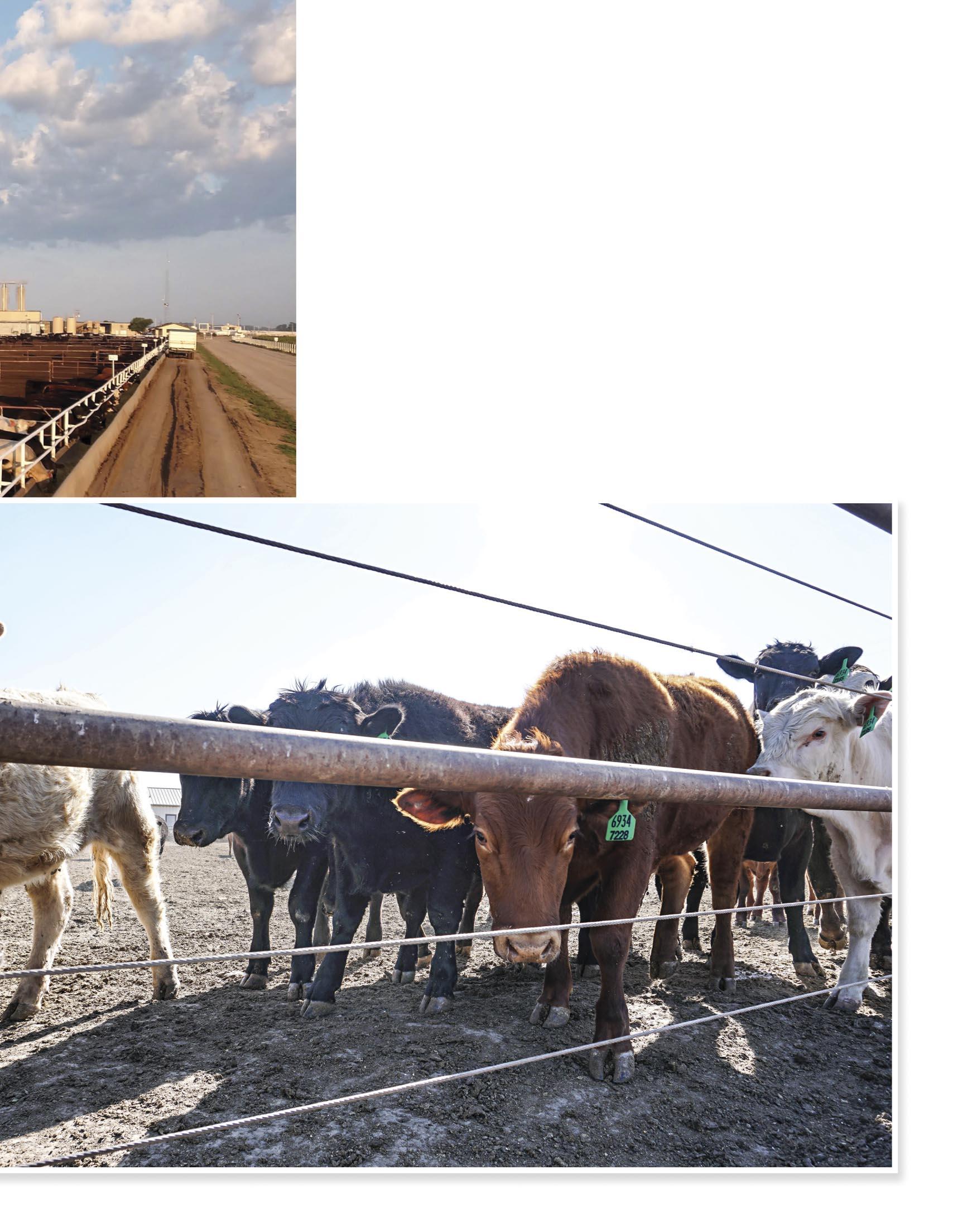
summer 2023 | pacdvms.com 33
There are several environmental factors that play a role in cattle comfort, including temperature, humidity, solar radiation, and windspeed. Monitoring these conditions is critical to ensure we modify our management when the environmental conditions change. Cattle physiologically handle heat very differently than most species. Their sweat capabilities are underdeveloped compared to other animals, so they are reliant on dissipating heat through their respiratory system (evaporative cooling through the moist air they breathe out) and through convection (air movement). Those systems typically do not keep up during the heat load of the day. However, cattle will accumulate heat load during the daytime hours and dissipate it rapidly during the nighttime cooling hours (it takes 4-6 hours to return cattle to regular temperature). When cattle experience heat stress, producers often observe very different behavior in their animals. Common behaviors are reduced feed intake, increased time standing, crowding water tanks, increased breathing rate (panting), and shade seeking movements (when shade is not available, cattle tend to bunch into groups to “shade” each other).
Heat stress mitigation strategies are implemented to increase cattle comfort during these stressful times. Every operation will implement strategies differently due to their unique cattle housing situation.
Not all animals within a group will be impacted the same way during heat stress events. Some individual factors that contribute to animals’ ability to manage heat may be hair coat (summer vs. winter), hair color (dark vs. light), breeding, or even previous health issues. Cattle that had pneumonia earlier in the feeding period may be more susceptible to heat stress later in the feeding period.
Strategies to mitigate heat stress are usually centered around management, water, environment, and nutrition. Minimizing cattle handling is very important during periods of heat stress. Weighing, processing, sampling, and shipping cattle are all necessary tasks, but during periods of heat, they should be strategically conducted during the very early morning hours to ensure cattle comfort. The daily water needs of cattle roughly double as the ambient temperature increases from 70°F to 90°F. When the year’s first heat episodes occur, it is very important to ensure that automatic water tanks have been adjusted to maximum capacity as many have separate
winter and summer capacity levels. Producers may also choose to increase water tank capacity during heat stress events. Some of these practices include adding additional water tanks, filling extra water tanks on a daily basis, or in extreme heat stress events, using sandbags to section off a portion of the feed bunk to fill with water.
Nutritionally, we manage cattle to the best of our ability to minimize heat of fermentation while ensuring adequate intake. Total mixed rations that are delivered to cattle in feedlots and backgrounder facilities are usually easily digested rations that minimize the heat of fermentation. As an example, poor quality grass hay produces a lot of heat from digestion in cattle due to its fibrous composition compared to corn and corn co-products. During heat events, cattle usually consume less. It is at these times of heat stress that our nutritionists and farm managers change feeding strategies to ensure that cattle do not binge feed when the weather cools off and to reduce the likelihood of a digestive upset.
Environmental heat mitigation has many options. Constructing pens with mounds in the center of the pen that allow cattle to access breezes that may be blocked at the regular pen level is one method. Simple chores like cutting weeds on fence lines and moving haystacks to increase air flow pay dividends to cattle comfort. Sprinkler systems can also be utilized in overnight hours to cool the pen floor before the heat of the next day. Unless cattle are completely soaked to the skin, they should not be used during daytime hours for risk of increasing humidity. Bare dirt can absorb a tremendous amount of heat during the heat of the day, reaching temperatures up to 140°F. Wheat straw or corn stalk bedding sprinkled over the pen floor can reflect solar radiation and does not absorb the heat like bare ground. Bedding can reduce the temperature of the pen floor by about 25°F.
Appropriate shade can be utilized in some situations, assuming they are constructed correctly so they do not block the important breezes that cool cattle while still reducing the solar radiation that is absorbed by the ground. Many questions, such as return on investment, cattle performance, and type of animal to use them with, surround shade utilization in the cattle industry. To begin addressing these questions and concerns, our research group at Kansas State University conducted a two-year
feedlot 34
Strategies to mitigate heat stress are usually centered around management, water, environment, and nutrition.
backgrounding study at the KSU Beef Stocker Unit to evaluate use of shade as well as feeding strategy (limit feeding a high energy, low starch diet vs. full fed high forage diet). Backgrounding cattle were chosen because very little research is available on the effect of shade on newly arrived calves. The study was conducted utilizing 40 pens of cattle each year for a 90-day growing period during the summer months. Our consistent significant findings showed that shade, regardless of feeding practice, improves average daily gain by 7%, increases feed intake by 6%, improves feed efficiency by 4%, and improves cattle comfort (as measured by panting scores). On top of these findings, animals provided shade reduced their water usage (consumption) by 11%. Changing feeding practices to a more easily digestible ration also reduced water usage as well as increased cattle comfort.
A.J. Tarpoff was born and raised in Edwardsville, Illinois. A.J.'s family owned and operated a beef processing plant and a steakhouse. He received his B.S. in Animal Science at Kansas State University in 2010. In 2012, he received his D.V.M. and M.S. in Biomedical Science at Kansas State University. He spent four years in feedlot production practice before returning to his alma mater to serve as the Beef Extension Veterinarian in Kansas.
A.J. has a 70% extension, 20% research, and 10% teaching appointment. He works closely with producers, practicing veterinarians, and members of industry to bring relevant extension and education that improves cattle health and the productivity of the beef industry.


Managing cattle through heat stress episodes should be a multiprong approach. Prepare now for your operation-specific response. Monitor weather conditions closely and be prepared to implement your plan when heat stress levels are forecasted to occur for three or more days with minimal nighttime cooling. This article has been translated to Spanish on page 54.

summer 2023 | pacdvms.com 35
AIP IN FEEDLOTS
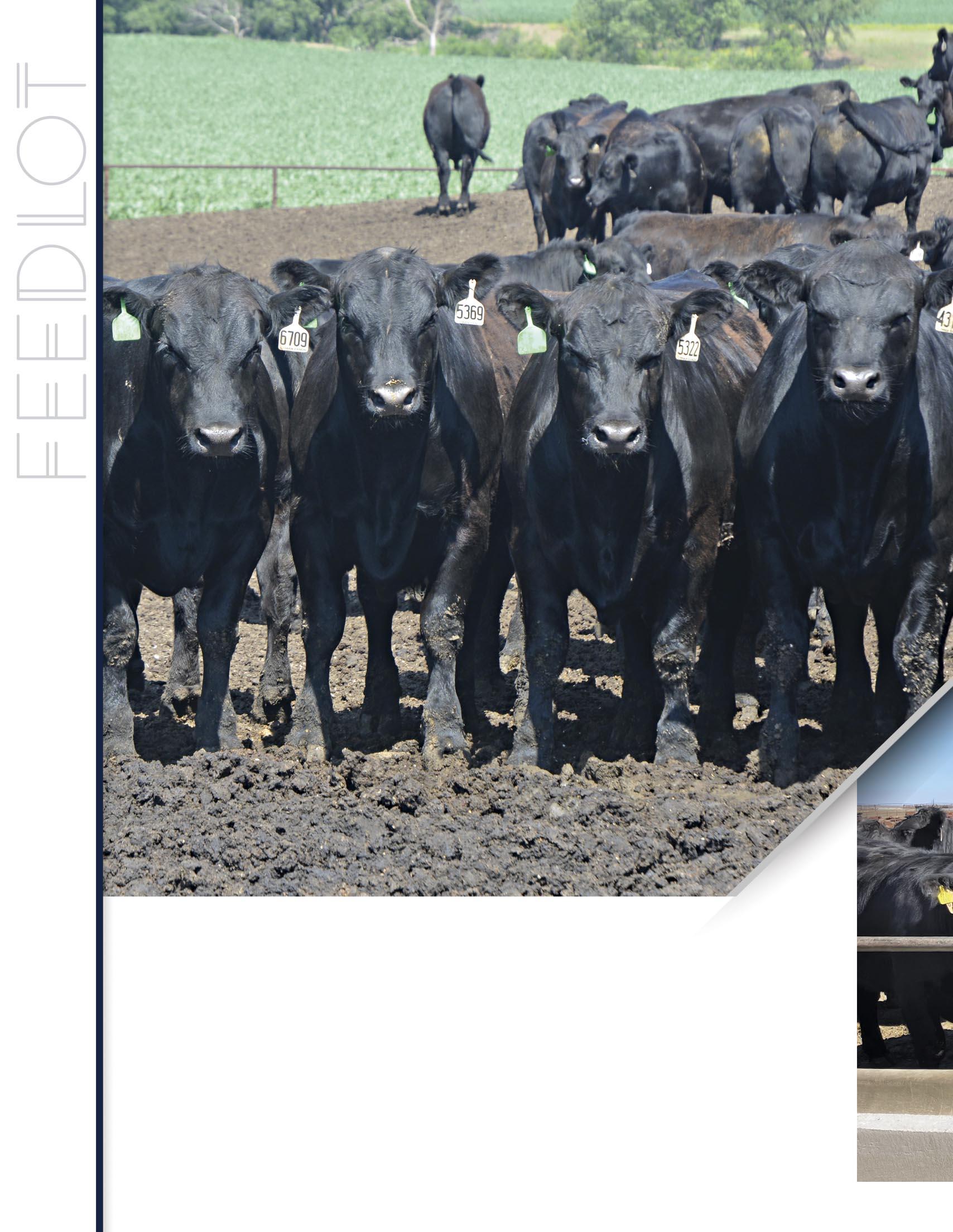 By Dan Thomson, PhD, DVM, Production Animal Consultation
By Dan Thomson, PhD, DVM, Production Animal Consultation
Atypical interstitial pneumonia, commonly known as AIP, continues to be a considerable problem in the beef industry. AIP is poorly understood, but we can compare this syndrome to disorders in other species that result in similar lung pathology, including COVID in humans.

summer 2023 | pacdvms.com 37
True AIP in cattle is also known as fog fever. In these cases, cattle consume toxic feedstuffs such as lush forages, perilla mint, or moldy sweet potatoes. In days gone by, cattle turned out on lush forages on river bottoms on foggy mornings would consume the feedstuffs high in the amino acid named tryptophan. The tryptophan was converted in the rumen to 3-methylindole, which is absorbed across the rumen wall and goes to the lung in the bloodstream. In the lungs, 3-methylindole is converted to 3-MEIN. This compound is toxic to cells that line the air sacs (interstitial cells). The toxin causes an inflammatory reaction, and the result is pathology associated with AIP.
People that died of respiratory disease with COVID had pathology consistent with acute respiratory distress syndrome (ARDS). Microscopically and grossly, ARDS
and AIP present the same. As you review the literature, there are 60 known causes of ARDS in humans. The most common causes of ARDS in humans are septicemia (blood bacterial infection), inhalation of smoke, aspiration of water or vomit, inhalation of endotoxin, and trauma to the chest area. Cattle on feed would have a consistent tryptophan intake. Therefore, it is logical that cattle suffer from ARDS in the feedlot rather than traditional AIP like fog fever cows. The combination of heat stress, dust inhalation (endotoxins in manure), sepsis, and other factors could be additive, resulting in clinical disease.
The cattle with AIP/ARDS will present in grave respiratory failure. Their backs will be swayed, and they will be mouth breathing. Most of these animals will stand around a water tank. They are thirsty but can’t stop panting long enough to get a drink. The lungs at necropsy for AIP/ARDS cattle that die are severely swollen, large, and heavy. It is no wonder that the cattle have difficulty breathing. The increased cellular mass in the lungs decreases the space for air. Animals also have trouble exhaling due to the fact that the lungs become too big for the chest cavity and don’t want to decompress. We tend to see the incidence of AIP more in longer day cattle during the summertime.
Many times, we feel that the clinical signs of AIP come on very quickly. We have tended to think that the syndrome is similar to an allergic reaction with cause and effect being tied together in a few hours. Veterinarians have also reported that cattle that died from AIP present with higher rumen pH upon necropsy. These veterinarians reported that cattle may suffer from a digestive upset, such as acidosis, and then go off feed prior to the acute presentation of the syndrome. However, as we have learned with COVID, the pathology associated with ARDS may take over a week to develop.

feedlot 38
Perhaps these cattle contract respiratory disease issues such as AIP/ARDS from dust, heat stress, endotoxin inhalation, or other insult and start to develop the pathology over a 5- to 10-day period. These cattle would be uncomfortable and then decrease their intakes until they present acutely to a pen rider. By the time we can identify AIP cattle, the lung pathology has progressed severely and cattle are not eating.
For every complex problem, there is a simple answer. That simple answer is wrong. Or at the very least, it is not the only factor. AIP in feedlot cattle must be a complex issue. The human medical field has been able to create AIP/ARDS-like syndrome in sheep, pigs, dogs, and other animals. The challenge models combine heat stress with smoke inhalation, endotoxin inhalation, sepsis from bacterial infection, and lavage of internal lung surfaces. If we think about AIP/ARDS in feedlot cattle, we see the presentation in the summer in cattle with many days on feed. In the summer, we have heat stress and dust inhalation in our cattle. Our “dust” is not dirt. Feedlot dust is dried manure and that means we will have gram negative bacterial endotoxin in the particles being inhaled. If there are 60 known causes of ARDS in humans, why would we think that there would be one or two clear reasons we see this syndrome in cattle? Nearly half of the pancreatitis cases in humans lead to ARDS because the lipase from the pancreas travels into the lungs and attacks the phospholipid bilayer of the interstitial cells. We have seen from researchers that stress (regardless of the cause) will create leaky gut syndrome in cattle allowing bacteria and endotoxin from the gut to enter the bloodstream. Whether the insult is from inhalation or from the bloodstream, agents (viruses, bacteria, toxins) are getting to the interstitial cells of the lungs and causing severe inflammation and subsequent pathology.
So, knowing that AIP/ARDS is a non-infectious disease process, it is not a surprise that an effective treatment for AIP is not known. We experience very high case fatality rates in true AIP/ARDS cases in feedlot cattle. In humans, ventilation and low-dose anti-inflammatory agents such as dexamethasone are used in the treatment. We do not have ventilators or the ability to slowly drip dexamethasone for multiple days in feedlot cattle. High doses of dexamethasone in human ARDS cases resulted in worse case outcomes than not giving steroids at all. Case outcomes in ARDS cases in humans are not very rewarding even with advanced supportive care.
While prevention and treatment of AIP/ARDS is hard
to pinpoint, it is important to note that good animal husbandry and low stress cattle handling are imperative. We must focus on areas of stress such as heat stress, dust, nutritional stress (acidosis, bunk management), physiological stress of long days of exposure to high energy diets, cattle handling during reimplant, bunk and water tank space, previous bouts with respiratory disease, and more. Because it is difficult to differentiate between AIP/ARDS and BRD, we usually treat with a short withdrawal antibiotic and then provide supportive care with good air movement and shade, along with fresh water and feed. Some animals will not make the trip all the way to the hospital due to the stress and decreased lung capacity. Using a trailer to move these animals may save their life. We will continue to learn more as we develop diagnostic tools and use technology to identify root causes without our biases leading us down the wrong path.

Dr. Dan U. Thomson is a third-generation bovine veterinarian from Clearfield, Iowa. Thomson is an owner/partner in PAC veterinary and research services which oversees the veterinary care, health and well-being for 20% of the U.S. cattle of feed. He is recognized internationally as a leader in animal welfare, beef cattle production, and cattle health management. Dr. Thomson’s research program has been granted over $35.3 million with $16.0 million of those funds coming with him as the primary investigator. Thomson is the founder and host of Doc Talk, a nationally aired beef cattle health veterinary show on television. He has hosted over 550 episodes of the show in its 11th season that reaches over 45 million homes world-wide. Dr. Dan is married to his wife Cindy. They have four daughters: Kelly, Katelyn, Tory, and Sarah. They enjoy hunting over bird dogs, fishing in southwest Iowa, and traveling.
This article has been translated to Spanish on page 60.
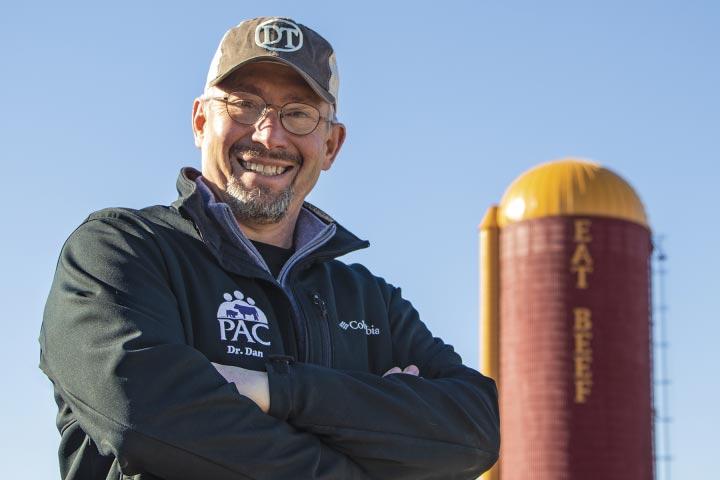
summer 2023 | pacdvms.com 39
Feedlot Cattle Health Summit to be Held in Kearney, Nebraska on July 12

This summer, Production Animal Consultation (PAC) will host their annual industry summit meeting, allowing people from the beef industry to gather and exchange ideas. “This year, we wanted to focus on opportunities to improve cattle health and management from start to finish in the feedlot,” said Dr. Kip Lukasiewicz, consulting veterinarian and PAC owner. “In the past, getting cattle through the first 30 to 60 days was central to health programs. Today, attention to detail until cattle are delivered to the plant can make or break profitability for a pen.”
The PAC Summit for Industry Leaders will be held July 12, 2023, at the Holiday Inn in Kearney, Nebraska. The event features an exciting line-up of speakers and topics:

• Kip Lukasiewicz, PAC veterinarian and facility design consultant, and Jacob Mayer, professional engineer at Settje Agri-Services & Engineering, Inc., will discuss designing facilities for cattle handling.
• Sam Cossio, feedlot consultant and owner of Back to Basics Consulting, will present strategies for attracting and recruiting labor.
• Tom Brincks, a risk management expert from Partners for Production Ag, will deliver a talk entitled “How to ride a bull without getting hurt!”.
• Drew Magstadt, a veterinary diagnostician at
the Iowa State Veterinary Diagnostic Laboratory, will talk about the role of diagnostic testing in feedlot health programs.
• Corbin Stevens and Dan Thomson, PAC veterinarians, will provide information and insight on late-day death loss in feedlot cattle.
• Pete Anderson, a strategic planning and leadership expert from Midwest PMS LLC, will wrap up the day with a discussion of how to implement strategic planning for continuous improvement.
“The value of cattle in our feedlots is at a record high yet margins continue to be tight. We have very little margin for error. From unloading to shipping, we have opportunities to improve cattle health, wellbeing and performance,” said Dr. Dan Thomson, consulting veterinarian and PAC owner. “We host these meetings to set the stage for discussions that bring realized value to our clients.”
Production Animal Consultation veterinarians care for cattle from birth to harvest. In addition to providing veterinary health services, PAC conducts cattle research and data analysis, hosts educational opportunities on animal stewardship and facility design, and provides bilingual consultation for livestock producers both domestic and international. PAC veterinarians strive to provide industry leaders with opportunities to improve their operations through collaboration and science.
industry 40
To register and learn more about the 2023 PAC Summit for Industry Leaders, visit https://www.pacdvms.com/summit-industry-leaders.

DON’T
LET THEM STEAL YOUR CHEESE: ‘LEVEL UP’
YOUR PASSWORD GAME
 By Richard Fleeman, Fortreum, LLC
By Richard Fleeman, Fortreum, LLC
If you are over 40 years old, you have probably played some variation of the game Mouse Trap. As a child, it was a favorite of mine. I loved the mechanics of setting up the game board and attempting to entrap my family or friends to take their cheese. When I look back, I have fond memories of playing that entertaining game of trap setting and cheese thieving. As I look forward, I draw a comparison to common day cybercriminals. I can only imagine the grins when the traps they set yield another victim whose cheese has just been stolen.

summer 2023 | pacdvms.com 43
If you pause for a moment and reflect on the latest news articles of the most recent data breach, I am sure you will think about the barrage of text messages and emails that hit your phone and inbox daily. Cybercriminals prey on the technical naivete and emotional nature of humans, cleverly crafting their traps to be sprung. I have been in the information technology and security industry for over 25 years, and one thing that is a constant is that these criminals are ruthless and will never stop trying to steal your cheese.
Because we all live in this real-life game of Mouse Trap, we have no choice but to level up our approach and do what is in our power to defend our cheese. If we make things more difficult for these criminals, it accomplishes two things, First, it limits the risk and potential damages of something if and when it occurs. Second, it makes us less appealing prey. Criminals prey on easy targets; they simply want quick wins and big rewards.
As I mentioned in my last article on 2023 trends, breaches are happening at an increased velocity. In CrowdStrike’s 2023 Global Threat Report, we see malware-less attacks have increased to 71%. Why is this important to understand? It is because these breaches or attacks were successful often with valid credentials. As we continue to use various online services, our digital footprint continues to expand at a rapid pace. I want to arm you with some tools, tips, and tricks to make your cheese a bit more difficult to steal.
Let’s take some time to break down the recommendations in my last article for both password management and multifactor authentication since they go hand in hand.

• Do not use shared passwords. A shared password is the actual same password used for multiple accounts that you have. In the security industry, we refer to this as “password reuse”. When using the same password for different applications and websites, the risk is if one website is compromised, attackers can use those same login credentials to try and gain access to other websites you might have access to. This is especially dangerous if your email accounts are compromised.
• Do not use shared accounts. When using shared accounts in your business, you lose individual accountability and chances of account compromise increase due to the nature of sharing. The action here is to ensure every person has their own login to any system or application you use as part of your business.
• Use unique and complex passwords. Incorporate the use of unique and complex passwords. Each account should have a unique password that is considered complex. Regarding complexity,
industry 44
I generally try to use passwords that are at least 16 characters in length and use a combination of letters, numbers, and symbols. These passwords usually look like gibberish, but that is the point. They help protect you from dictionary-based attacks that are employed to “crack” passwords on accounts.

• Regularly update passwords. Rotate your passwords on a set interval. Depending on the criticality of the data or system used, you can define your own policy. The industry standard is a 90-day password rotation for highly sensitive accounts. You may put less-sensitive accounts on a yearly rotation, etc.
• Enable multifactor authentication (MFA). Get into the practice of enabling this functionality on all accounts that are mission-critical or sensitive in nature (i.e., financial accounts, email accounts, etc.) For example, multifactor authentication can consist of a username and password combination (something you know) with either an SMS, email, or One Time Password (OTP) code (something you have). If you really want to go crazy, you can look at using a hardware key such as a YubiKey (literally something you have).
• Educate your employees. Take time to share this information with your employees. They should be educated on the importance of good password etiquette and the risks associated with poor password management.
The recommendations above are a layered approach making it more difficult for someone to compromise your livelihood. The more of these recommendations you leverage, the more it increases the difficulty of compromise and inversely, the more it decreases risk to your business. This might seem overwhelming on top of managing your day-to-day business. I get it, and this is where my recommendation for a password manager in my last article comes into play. The advantages of using a password manager are numerous and can help you achieve
all of the above in one centralized location protected by one password or passphrase. A good password manager will have desktop, mobile, and browser integrations to simplify the process of practicing good password hygiene. Right now, my personal recommendation is 1Password (https://www.1password.com) for ease of use, functionality, and the variety of integrations it offers with my mobile phone, PC, and web browsers.
I would encourage you to start putting some of these into practice in both your business and personal lives. Cybercrimes continue an upward trend, and these are some simple practices that will help protect you and your business.
Sources https://www.crowdstrike.com/global-threat-report/
Richard Fleeman is a Director at Fortreum, LLC and is responsible for supporting a wide variety of customers in both the public and private sectors. Richard’s team provides offensive security services including network penetration testing, application penetration testing, and social engineering services. Richard has over 25 years of information technology and information security experience including application and network security assessments, security architecture design and implementation, incident response, vulnerability management, con fi guration management, as well as business continuity and disaster recovery planning. Before joining Fortreum, Richard was responsible for running a variety of teams focused on both compliance and offensive-based vulnerability management services. Richard maintains the following certifications: Certified Information Systems Auditor (CISA), Certified Information Systems Security Professional (CISSP), GIAC Penetration Tester (GPEN), and Offensive Security Wireless Professional (OSWP).

As we continue to use various online services, our digital footprint continues to expand at a rapid pace.
summer 2023 | pacdvms.com 45
I want to arm you with some tools, tips, and tricks to make your cheese a bit more difficult to steal.
AASV NAMES 2023 HOWARD DUNNE MEMORIAL AWARD RECIPIENT
Provided by American Association of Swine Veterinarians, March 7, 2023

Dr. Joseph Connor received the American Association of Swine Veterinarians’ 2023 Howard Dunne Memorial Award on March 6 th during the association’s 54 th Annual Meeting in Aurora, Colorado. The award recognizes an AASV member who has made important contributions and provided outst anding service to the association and the swine industry.
The Carthage, Illinois native was always interested in livestock and farming and gravitated to swine because of an interest in population medicine and epidemiology. Connor received his BS and DVM from the University of Illinois, and his MS from the University of Minnesota.
Dr. Connor founded Carthage Veterinary Service, LTD after purchasing the CVS practice in 1980. A leading swine veterinarian in the world, he considered it a privilege to be involved in the swine industry during a time of significant transformation and assisted producers in other countries wanting to see similar transformations. He was recognized for his international efforts by being named the first honorary member of the Japanese Association of Swine in 2008.
A true leader in swine health, Dr. Connor has led the AASV for decades. After serving on the AASV Board of Directors, he was elected president of the association in 1988. He continues to serve the association as a member of the Transboundary and Emerging Diseases Committee, and Foundation Investment Committee. Colleagues regard Dr. Connor as an icon in the swine industry and are grateful for his tremendous contributions and outstanding service to the AASV.
Dr. Connor has been recognized by his peers for his exemplary service to swine medicine as the AASV Swine Practitioner of the Year (1995) and as the recipient of the Allen D. Leman Science in Practice Award (2004). He was inducted into the PIC Hall of Fame in 2016 and more recently into the Swine Web Hall of Fame.

He has contributed to the greater knowledge of swine medicine for veterinarians and producers as a featured speaker and author of countless peer-reviewed journal articles, abstracts, educational manuals, and book chapters. He delivered both the Alex Hogg Memorial Lecture and Howard Dunne Memorial Lecture at past AASV Annual Meetings.
When asked to comment on what the award means to him, Dr. Connor said, “I am incredibly humbled and honored to receive the Howard Dunne Memorial Award and have my name added to the list of AASV icons who have served and guided the swine veterinary community through the years. I am indebted to countless mentors, colleagues, and friends who have educated and challenged me along this journey. I would like to thank our clients and industry friends, my veterinary group, and above all my family for contributing support to me in countless ways.”
industry 46


NEBRASKA VETERINARIAN HONORED WITH NATIONAL BEEF QUALITY ASSURANCE 2023 EDUCATOR OF THE YEAR AWARD Print permission from Nebraska Extension
This year, the Nebraska Beef Quality Assurance (BQA) program was the highlight of the Closing General Session “A BQA Celebration” at the 2023 Cattle Industry Convention.
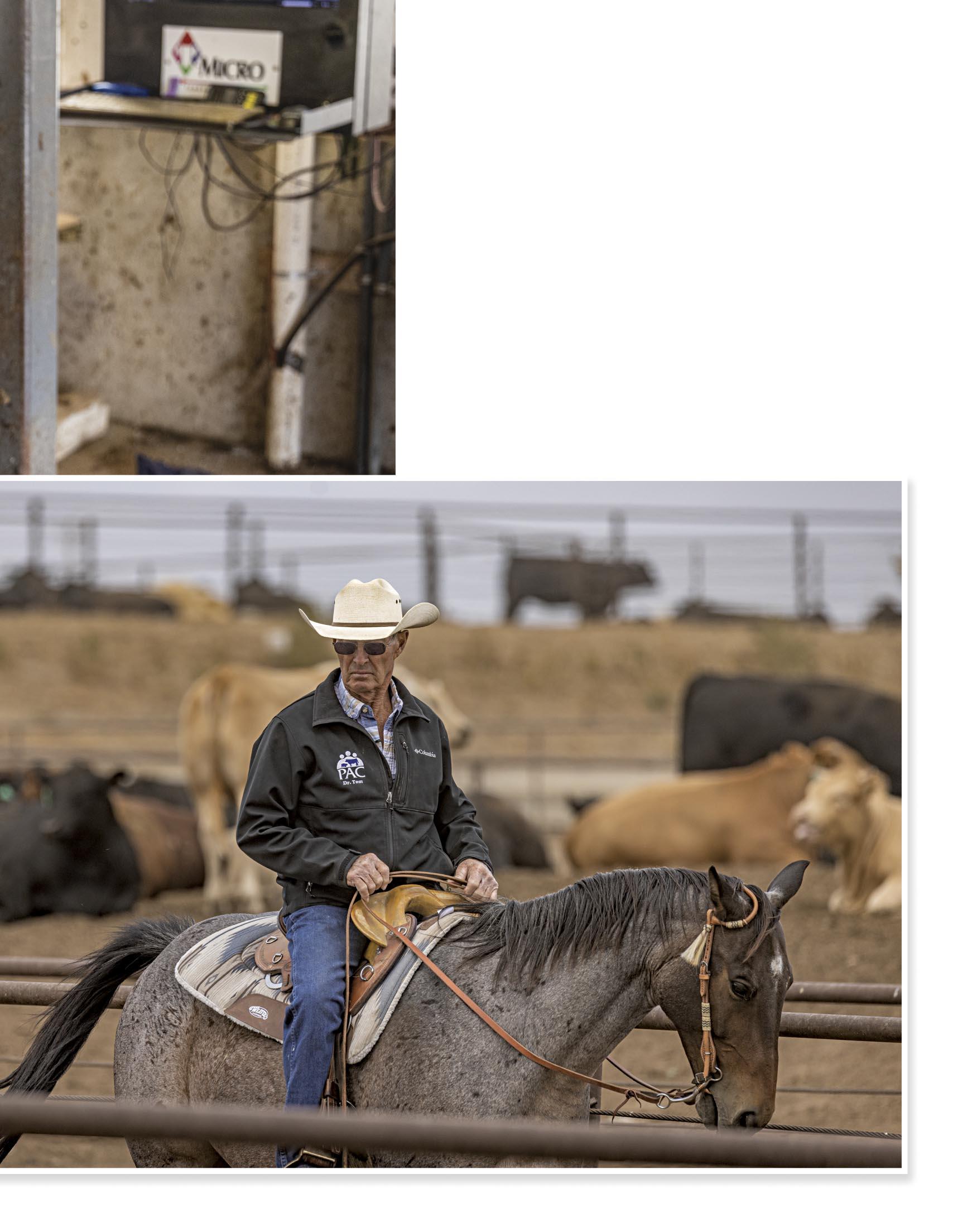
summer 2023 | pacdvms.com 49
Since 2009, the National BQA program has utilized the National BQA awards to recognize cattle producers across the nation for their BQA achievements. The program recognizes producers and operations from the following sectors: cow-calf, feedyard, marketer, and dairy. Additionally, the educator award recognizes an individual who has been dedicated to the BQA program throughout their career.
This year, the Nebraska BQA program made a big splash at the presentation of the 2023 National BQA awards winning four of the five categories: cow-calf, feedyard, dairy, and educator. This is the first time in the history of the National BQA awards program that a single state has won more than two awards in a single year.
“It’s a great honor for our state, our producers, and our educators to receive recognition at this prestigious national level,” said Jesse Fulton, Director of Nebraska BQA. “Our producers and educators deserve to be recognized for their commitment and contributions towards BQA initiatives.”
This year, Tom Noffsinger, DVM, was the recipient of the National BQA Educator of the Year award.
“Dr. Tom has been involved with the BQA program since its inception within the state of Nebraska and to this day continues to demonstrate his commitment to the beef industry through his involvement with teaching BQA principles,” said Fulton.
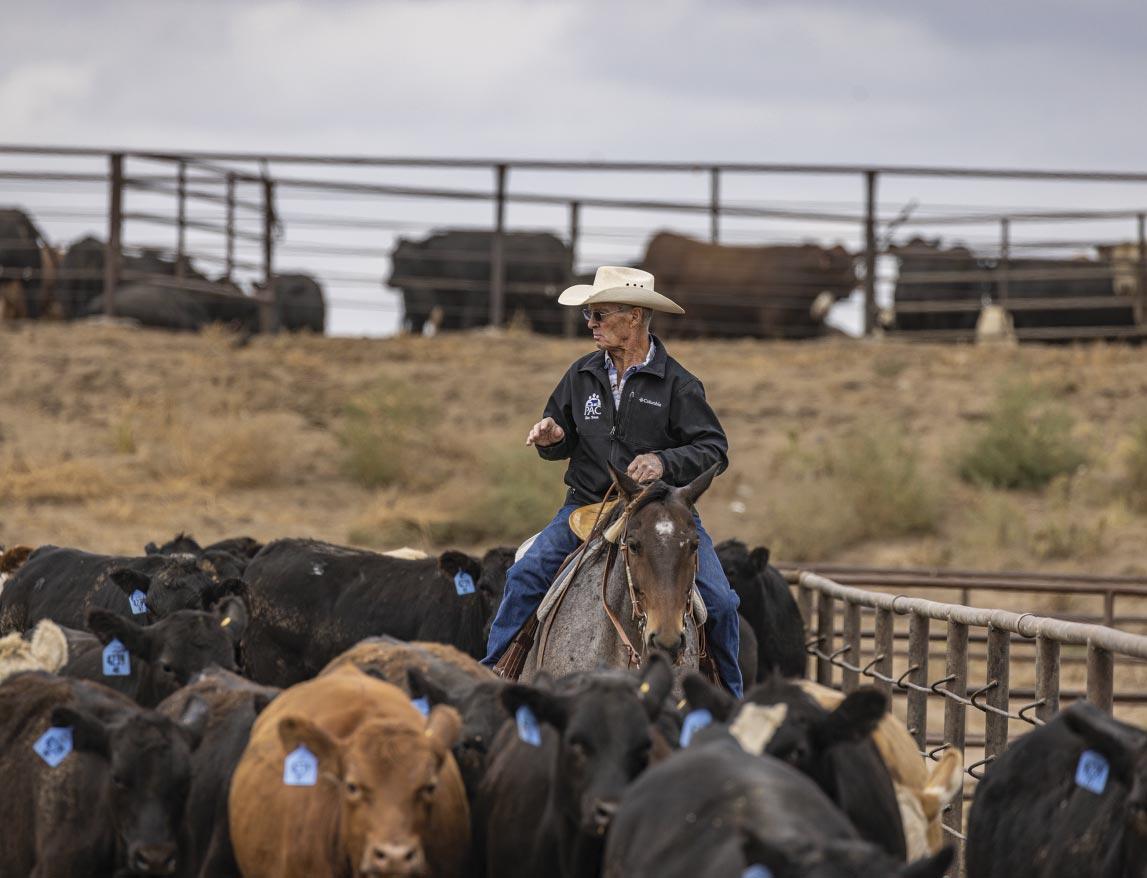
Dr. Noffsinger’s decades of work in the area of BQA has not only been instrumental in spreading the BQA
message across the nation, but he has also been an important player in bringing to light beef industry issues and ultimately contributing to successes in those same areas through his dedicated work focusing on low stress cattle handling and animal welfare.
According to many past National BQA Educator of the Year award winners, Dr. Dee Griffin (2012), Dr. Dan Thomson (2015), Dr. Bob Smith (2017), and Dr. Deb VanOverbeke (2022), Dr. Noffsinger has been a major player and supporter of the BQA program since its inception. Prior to state led BQA initiatives, Dr. Noffsinger was a part of a group of veterinarians already working with packers and processors to combat violative residues and injection site lesions plaguing the beef industry. Once state BQA programs came to fruition, Dr. Noffsinger was one of the first “Train the Trainers” in the state of Nebraska and from this position, trained thousands of cattle producers in BQA standard operating procedures and best management practices.
Dr. Noffsinger has long known the importance of BQA is not just checking the box or doing some additional paperwork. He has worked to demonstrate to producers that BQA is the driver that truly influences the health status of our cattle. He credits BQA for being the program that opened the door for him to be able to teach producers.
Throughout his career of practicing and consulting, Dr. Noffsinger would work with those responsible for cattle care to explain the “why’s” of veterinary medicine and how the “why” can influence the quality of beef. Dr. Griffin credits Dr. Noffsinger for being the engine that drove the concept and making the connection for producers, that if cattle are treated everyday of their life in a low stress manner, they would be heartier when faced with immune challenges and less likely to get sick. This reduction in animal treatment would lead to a reduced chance of potential animal treatment residues. This idea led to major changes in the BQA guidelines in 1991 which included “Care and Animal Husbandry Practices”.
Some early BQA demonstrations for Dr. Noffsinger included leading injection site tissue damage work-
industry 50
shops. Today, even Dr. Noffsinger says that as he was leading the program, he himself was learning more about how these animal health products caused blemishes and tissue damage.
Dr. Noffsinger believes that a BQA certification training isn’t just a review of material but a gateway to truly educate cattle producers and veterinarians alike. When covering components of a BQA training, Dr. Noffsinger often finds himself continuously elaborating on the “why” of the material in order to keep producers engaged and why the industry needs to follow the BQA efforts.
Dr. Noffsinger credits much of his BQA influence at the national level to being invited as a speaker to industry meetings. Because of much of his work in low-stress cattle handling, bovine respiratory disease management, and cattle lameness prevention, Dr. Noffsinger is often asked to speak at meetings such as Academy of Veterinary Consultants, American Association of Bovine Practitioners, and numerous other cattle industry meetings both nationally and internationally. Using his platform, Dr. Noffsinger preaches the BQA message to attendees and what implementing BQA practices within their operation can do for them.
Working alongside and teaching and learning from industry greats such as Bud Williams, Dr. Temple Grandin, Dr. Ron Gill, and Curt Pate, Dr. Noffsinger has become a household name in the area of low stress stockmanship. Dr. Noffsinger’s passion for low stress cattle handling has led him across the country conducting low stress cattle handling demonstrations.
As a cofounder and consulting veterinarian for Production Animal Consultation (PAC), Dr. Noffsinger continues to be an

advocate for not only the beef industry, but the BQA program. Dr. Noffsinger works with all his clients to answer the question of “why BQA” from a veterinarian standpoint. He has been influential in ensuring his veterinarian colleagues at PAC also understand the importance of the BQA program and low stress cattle handling education.
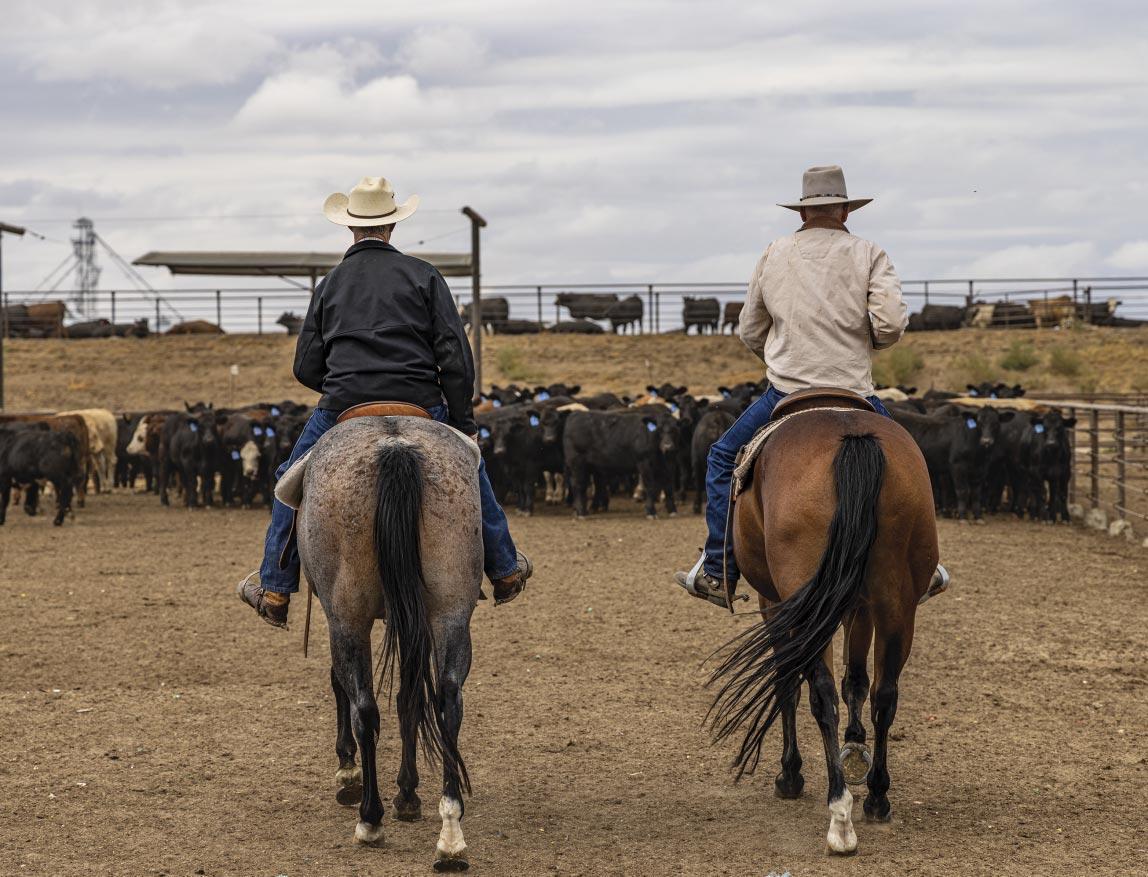
Dr. Noffsinger is unmatched in both his “boots on the ground” approach to BQA education and his commitment to low stress stock manship. His exceptional approach to educating producers on BQA principles to a broad audience has undoubtedly served as an example of what a BQA educator should be.
“An educator like Dr. Noffsinger is one many of us young educators look up to. His approach to new teaching concepts and ability to relate the ‘why we do things the way we do’ related to BQA is without compare,” said Fulton. “As a BQA educator myself, I hope I can be half as good as Dr. Tom as I work alongside cattle producers in the field of animal welfare.”
summer 2023 | pacdvms.com 51
Throughout his career of practicing and consulting, Dr. Noffsinger would work with those responsible for cattle care to explain the “why’s” of veterinary medicine and how the “why” can influence the quality of beef.
RICHARD PRATHER, DVM




Ellis County Animal Hospital Shattuck, Oklahoma
Dr. Richard Prather has spent his 37-year career in veterinary medicine working alongside his wife, Dr. Angie Prather, at Ellis County Animal Hospital in Shattuck, Oklahoma. With four small communities and zero stoplights in the county, Ellis County epitomizes rural America. It is a truly agricultural environment with farming and ranching as the staple income for most residents.
Dr. Prather and his colleagues strive to provide care and services that promote healthy animals and sustainable agriculture. He shared, “We are passionate about promoting the cow-calf segment of the industry and providing herd health practices that will attract and enable future generations to thrive in rural communities.”
Veterinary medicine has been a greater career than Dr. Prather could have ever imagined when he was starting out. He reflected, “Veterinary medicine has led to incredible relationships that have deeply rooted us into the rural way of life and created opportunities for our family to travel around the world.” He is particularly fond of the unexpected, unplanned, and unexplainable challenges of mixed animal practice, remarking, “The simple fact that there is no typical day is what endears us the most to mixed animal practice.”
BRADY LUKE, DVM
Dr. Brady Luke’s passion for veterinary medicine was sparked as a child watching his parents in their veterinary practice. Today, Dr. Luke is part of that same practice, Solomon Valley Veterinary Hospital in Beloit, Kansas. Located in the north-central part of the state, Beloit is home to about 3,500 people and surrounded by a mix of grassland and farm ground.
At Solomon Valley Veterinary Hospital, Dr. Luke works alongside his father and mentor, Dr. Charles Luke, four other veterinarians, and a great team to provide quality, practical medicine for their clients and their animals. One of their core values is keeping God at the center of it all. He explained, “If we honor him in how we treat our staff and clients, then everything else falls into place.”
While Dr. Luke enjoys the variety of procedures and animals that mixed animal practice presents, he is especially passionate about cow-calf production. He shared, “I love the fact that we can utilize grassland that would otherwise be unsuitable for crop production and can just keep improving generation after generation of beef genetics and health.”
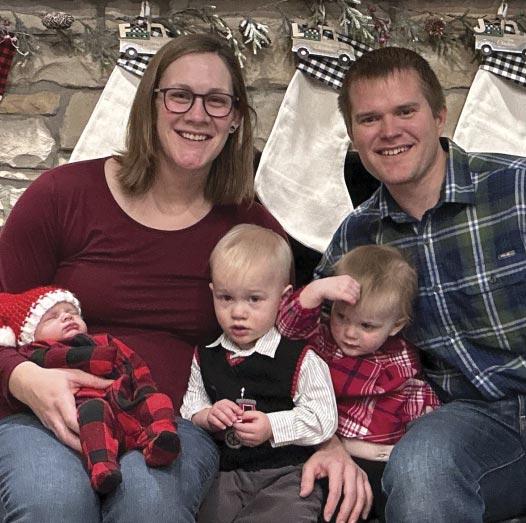
member highlight 52 PAC MEMBER HIGHLIGHTS ••••••••
Solomon Valley Veterinary Hospital Beloit, Kansas
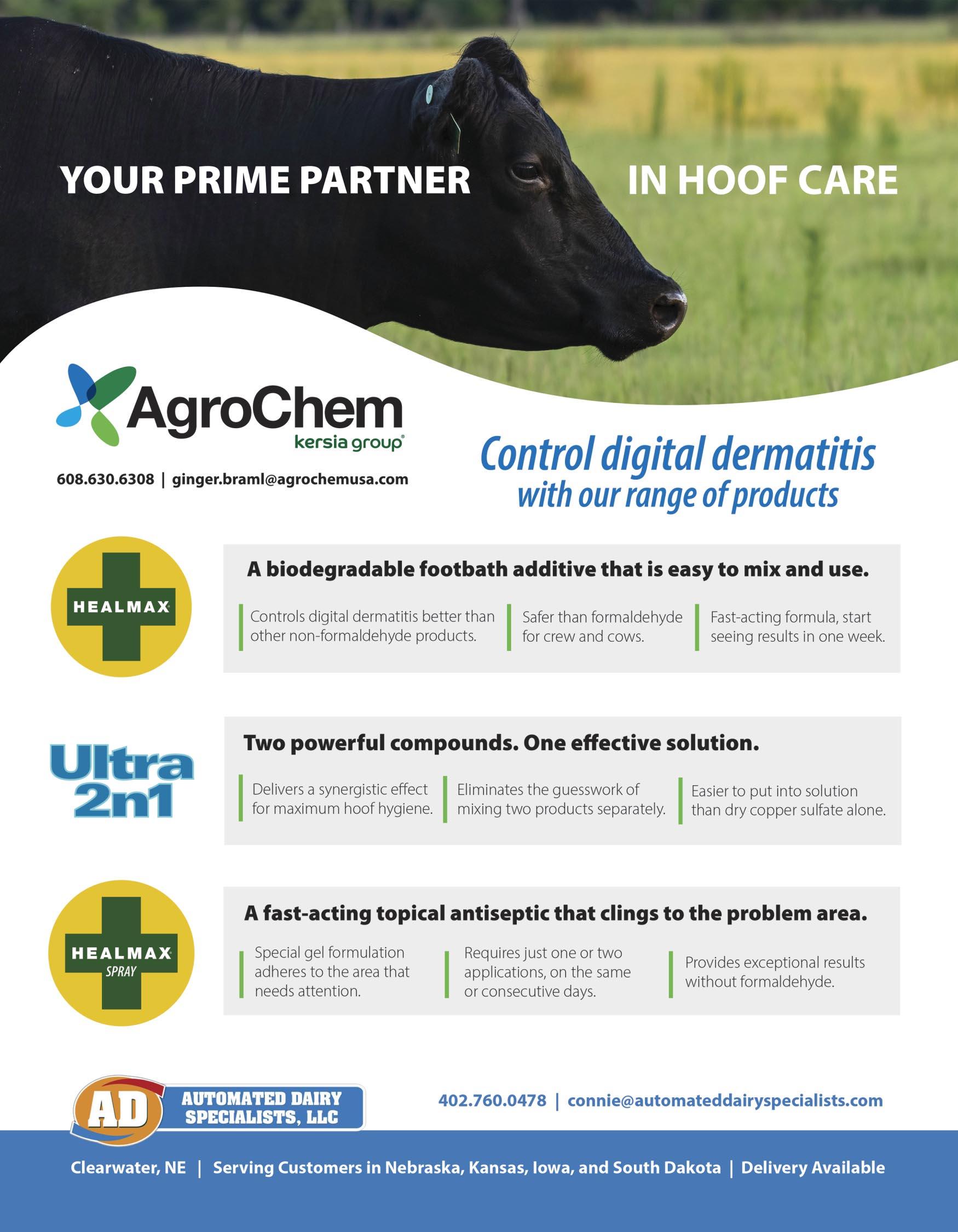
AYUDANDO A NUESTROS ANIMALES A SOBRELLEVAR EL CALOR DEL VERANO
Escrito por A.J. Tarpoff, DVM, MS, Kansas State University
Traducido por Jose Valles, MS, Production Animal Consultation

El ganado es altamente adaptable y puede desarrollarse en casi cualquier entorno de la Tierra. Dicho esto, los factores estresantes ambientales pueden impactar fuertemente la salud del ganado. Durante los meses de verano, el estrés calórico a menudo es nuestro enfoque para mejorar la comodidad del ganado.

summer 2023 | pacdvms.com 55
Hay varios factores ambientales que desempeñan un papel en la comodidad del ganado, incluyendo la temperatura, la humedad, la radiación solar y la velocidad del viento. El monitoreo de estas condiciones es fundamental para asegurar que modifiquemos nuestro manejo cuando las condiciones ambientales cambian. El ganado maneja fisiológicamente el calor de manera muy diferente a la mayoría de las especies. Sus capacidades de sudor están subdesarrolladas en comparación con otros animales, por lo que dependen de la disipación del calor a través de su sistema respiratorio (enfriamiento por evaporación a través del aire húmedo que exhalan) y a través de la convección (movimiento de aire). Esos sistemas generalmente no se dan abasto durante la carga de calor del día. Sin embargo, el ganado acumulará carga de calor durante las horas del día y la disipará rápidamente durante las horas de enfriamiento durante la noche (se necesitan de 4 a 6 horas para que el ganado vuelva a su temperatura normal). Cuando el ganado experimenta estrés calórico, los productores a menudo observan un comportamiento muy diferente en sus animales. Los comportamientos comunes son la reducción del consumo de alimento, aumento del tiempo de estar de pie, hacinamiento alrededor de los bebederos, aumento de la frecuencia respiratoria (jadeo) y los movimientos en búsqueda de sombra
(cuando no hay sombra disponible, el ganado tiende a juntarse en grupos para “darse sombra” el uno al otro).
Las estrategias de mitigación de estrés calórico son implementadas para aumentar la comodidad del ganado durante estos tiempos estresantes. Cada operación implementará estrategias de manera diferente debido a su situación única de alojamiento de ganado.
No todos los animales dentro de un grupo se verán afectados de la misma manera durante eventos de estrés calórico. Algunos factores individuales que contribuyen a la capacidad de los animales para controlar el calor pueden ser el pelaje (de verano o invierno), el color del pelaje (obscuro o claro), genética o incluso problemas de salud previos. El ganado que tuvo neumonía anteriormente en el periodo de alimentación puede ser más susceptible al estrés calórico más delante en el período de alimentación.
Las estrategias para mitigar el estrés calórico generalmente se centran en el manejo, el agua, el medio ambiente y la nutrición. Es muy importante minimizar el manejo del ganado durante los periodos de estrés calórico. El pesaje, el procesamiento, el muestreo y el embarque del ganado son tareas necesarias, pero durante los periodos de calor, deben realizarse estratégicamente durante las primeras horas de la mañana para asegurar la comodidad del ganado. Las necesidades diarias de agua del ganado casi se duplican a medida que la temperatura aumenta de 70°F a 90°F. Cuando ocurren los primeros episodios de calor del año, es muy importante asegurarse de que los bebederos automáticos se hayan ajustado a la capacidad máxima, ya que muchos tienen niveles de capacidad de invierno y verano por separado. Los productores también pueden optar por aumentar la capacidad del bebedero durante los eventos de estrés calórico. Algunas de estas prácticas incluyen agregar bebederos adicionales, llenar los bebederos adicionales diariamente o en eventos extremos de estrés calórico, usar sacos de arena para seccionar una parte del comedero y llenarlo de agua.
Nutricionalmente, manejamos el ganado a lo mejor de nuestra capacidad para minimizar el calor de la fercorrales

de
56
engorda
mentación y al mismo tiempo asegurar un consumo adecuado. Las raciones mixtas totales que se entregan al ganado en las operaciones de corrales de engorda e instalaciones de acopio por lo general son raciones fáciles de digerir que minimizan el calor de la fermentación. Como ejemplo, el pasto de mala calidad produce mucho calor de la digestión en el ganado debido a su composición fibrosa en comparación con el maíz y coproductos de maíz. Durante los eventos de calor, el ganado por lo general consume menos. Es en estos momentos de estrés calórico que nuestros nutriólogos y gerentes de las operaciones de corrales de engorda cambian las estrategias de alimentación para asegurar que el ganado no coma en exceso cuando el clima se enfría y para reducir la probabilidad de un malestar digestivo.
La mitigación del calor ambiental tiene muchas opciones. Construir corrales con montículos en el centro del corral que permitan que el ganado acceda a la brisa que puede estar bloqueada al nivel normal del corral es un método. Tareas sencillas como podar la hierba que existe a lo largo de las cercas y mover los
montones de pacas de heno para aumentar el flujo de aire pagan dividendos en la comodidad del ganado. Los sistemas de rociadores también se pueden utilizar durante las horas de la noche para enfriar el piso del corral antes del calor del día siguiente. A menos que el ganado esté completamente empapado hasta la piel, no deben utilizarse durante las horas del día por el riesgo de aumentar la humedad. El suelo descubierto puede absorber una enorme cantidad de calor durante el calor del día, alcanzando temperaturas de hasta 140°F. Camas de paja de trigo o rastrojo de maíz extendidas sobre el suelo del corral pueden reflejar la radiación solar y no absorbe el calor como el suelo descubierto. La cama puede reducir la temperatura del suelo del corral por aproximadamente 25°F.
Se pueden utilizar sombras adecuadas en algunas situaciones, suponiendo que estén construidas correctamente para que no bloqueen las brisas importantes que refrescan al ganado y al mismo tiempo reduzcan la radiación solar que absorbe el suelo. Muchas preguntas, como el retorno de la inversión, el rendimiento del ganado y el tipo de ganado en el que se utilizan, rodean

summer 2023 | pacdvms.com 57
la utilización de sombras en la industria ganadera. Para comenzar a abordar estas preguntas y preocupaciones, nuestro equipo de investigación en la Universidad Estatal de Kansas realizó un estudio durante dos años en un programa de acopio en la Unidad de Crianza de la Universidad Estatal de Kansas para evaluar el uso de la sombra, así como también la estrategia de alimentación (alimentación limitada con una dieta alta en energía y baja en almidón en comparación con una alimentación completa de dieta alta en forraje). Se eligió ganado de acopio debido a que hay muy poca investigación disponible sobre el efecto de la sombra en becerros recién llegados. El estudio se realizó utilizando 40 corrales de ganado cada año durante un periodo de crecimiento de 90 días durante los meses de verano. Nuestros hallazgos significativos consistentes mostraron que la sombra, inde pen dientemente de la práctica de alimentación, mejora el promedio de ganancia diaria por un 7%, aumenta el consumo de alimento por un 6%, mejora la eficiencia alimenticia por un 4% y mejora la comodidad del ganado (medida por los puntajes de jadeo). Además de estos hallazgos, los animales que recibieron sombra redujeron su uso (consumo) de agua por un 11%. Cambiar las practicas de alimentación a una ración más fácil de digerir también redujo el uso de agua y aumentó la comodidad del ganado.
El manejo del ganado a través de episodios de estrés calórico debe involucrar múltiples estrategias. Prepárese ahora para la respuesta específica de su operación.
Monitoree de cerca las condiciones climatológicas y esté preparado para implementar su plan cuando se pronostiquen niveles de estrés calórico durante tres o más días con un enfriamiento mínimo durante la noche.
A.J. Tarpoff nació y creció en Edwardsville, Illinois. La familia de A.J. era propietaria y operaba una planta procesadora de carne y un restaurante de cortes de carne. Recibió su licenciatura en zootecnia en la Universidad Estatal de Kansas en el 2010. En el 2012, recibió su doctorado en medicina veterinaria (D.V.M., por sus siglas en ingles) y una maestría en ciencia biomédica en la Universidad Estatal de Kansas. Paso cuatro años en la practica de producción de corrales de engorda antes de regresar a su alma máter para servir como veterinario de extensión de ganado de carne en Kansas. A.J. tiene un puesto de 70% de extensión, 20% de investigación, y 10% de docencia. Trabaja estrechamente con productores, veterinarios practicantes y miembros de la industria para brindar extensión y educación relevante para mejorar la salud del ganado y la productividad de la industria de la carne.

Este artículo está disponible en inglés en la página 32.
RISA ENTRE DIENTES DESDE OZ
Esposo: ¿Que hay para cenar?
Esposa: Nada.
Esposo: No tuvimos nada anoche.
Esposa: Preparé lo suficiente para dos días.
¡Sigan sonriendo! Un cordial saludo, Jane Sullivan
Traducido por Jose Valles, MS, Production Animal Consultation

corrales de engorda 58
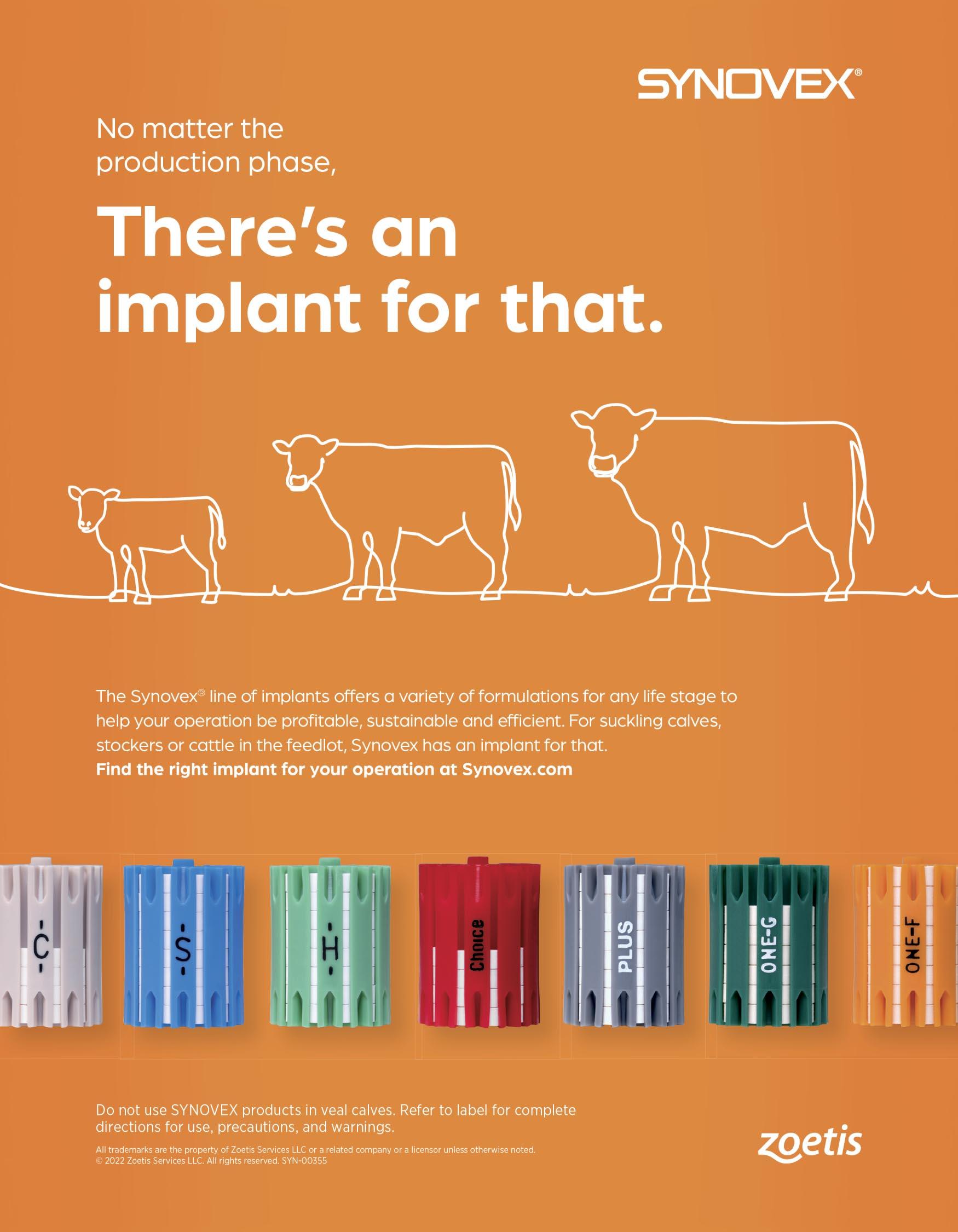
NIA EN OPERACIONES DE CORRALES DE ENGORDA
Escrito por Dan Thomson, PhD, DVM, Production Animal Consultation
Traducido por Jose Valles, MS, Production Animal Consultation

La neumonía intersticial atípica, comúnmente conocida como NIA (AIP, por sus siglas en ingles), sigue siendo un problema considerable en la industria de la carne de res. Se entiende muy poco sobre la NIA, pero podemos comparar este síndrome con trastornos en otras especies que dan como resultado una patología pulmonar similar, incluyendo COVID en humanos.

summer 2023 | pacdvms.com 61
A la verdadera NIA en el ganado también se le conoce como fiebre de la niebla. En estos casos, el ganado consume alimentos tóxicos como forrajes frondosos, menta perilla o camotes mohosos. En tiempos pasados, el ganado puesto en forrajes frondosos en los fondos de los ríos en las mañanas de niebla consumía los alimentos ricos en un aminoácido llamado triptófano. Una vez en el rumen, el triptófano se convierte en 3metilindol, el cual se absorbe a través de la pared del rumen y llega al pulmón a través del torrente sanguíneo. En los pulmones, el 3-metilindol se convierte en 3MEIN. Este compuesto es tóxico para las células que recubren los sacos de aire (células intersticiales). La toxina provoca una reacción inflamatoria y resulta en una patología asociada con NIA.
Las personas que fallecieron por enfermedad respiratoria con COVID tenían una patología compatible con el síndrome de dificultad respiratoria aguda (SDRA) (ARDS, por sus siglas en ingles). Microscópica y macroscópicamente, el SDRA y la NIA presentan lo mismo. A medida que se revisa la literatura, hay 60 causas conocidas del SDRA en humanos. Las causas más comunes del SDRA en humanos son la septicemia (infección bacteriana en la sangre), la inhalación de
humo, la aspiración de agua o vómito, la inhalación de endotoxinas y trauma en el área del pecho. El ganado en alimentación tendría una ingesta constante de triptófano. Por lo tanto, es lógico que el ganado sufra de SDRA en las operaciones de corrales de engorda en lugar de NIA tradicional como las vacas con fiebre de la niebla. La combinación de estrés calórico, inhalación de polvo (endotoxinas en el estiércol), sepsis y otros factores podrían ser aditivos y dar como resultado una enfermedad clínica.
El ganado con NIA/SDRA una presentará falla respiratoria grave. Sus lomos serán desbalanceados y respirarán por la boca. La mayoría de estos animales se pararán alrededor de un tanque de agua. Tienen sed, pero no pueden dejar de jadear el tiempo suficiente para beber. En la necropsia, los pulmones del ganado que muere con NIA/SDRA están severamente inflamados, grandes y pesados. No es de extrañarse que el ganado tenga dificultad para respirar. La incrementada masa celular en los pulmones disminuye el espacio para el aire. Los animales también tienen problemas para exhalar debido al hecho de que los pulmones se vuelven demasiado grandes para la cavidad torácica y no quieren descomprimirse. Tendemos a ver mayor incidencia de la NIA en el ganado con más días en alimentación durante el verano.
Muchas veces, sentimos que los signos clínicos de la NIA aparecen muy rápidamente. Hemos tendido a pensar que el síndrome es similar a una reacción alérgica con causa y efecto unidos en unas pocas horas. Los veterinarios también han informado que el ganado que murió de NIA presento un pH ruminal más alto en la necropsia. Estos veterinarios informaron que el ganado puede sufrir trastornos digestivos, como acidosis y luego dejar de consumir alimento antes de la presentación aguda del síndrome. Sin embargo, a medida que hemos aprendido con el COVID, la patología asociada con el SDRA puede tardar más de una semana en desarrollarse. Tal vez este ganado contrae problemas de enfermedades respiratorias como NIA/SDRA por polvo, estrés calórico, inhalación de endotoxinas u otro insulto y comienza a desarrollar la patología en un período de 5 a 10 días. Este ganado se sentiría incómodo y luego disminuiría su consumo hasta que se presentara de manera aguda ante un vaquero. Para cuando podemos identificar el ganado con NIA, la patología pulmonar ha progresado severamente y el ganado ha dejado de comer.
Para cada problema complejo, hay una respuesta simple. Esa simple respuesta es incorrecta. O al menos, corrales de engorda
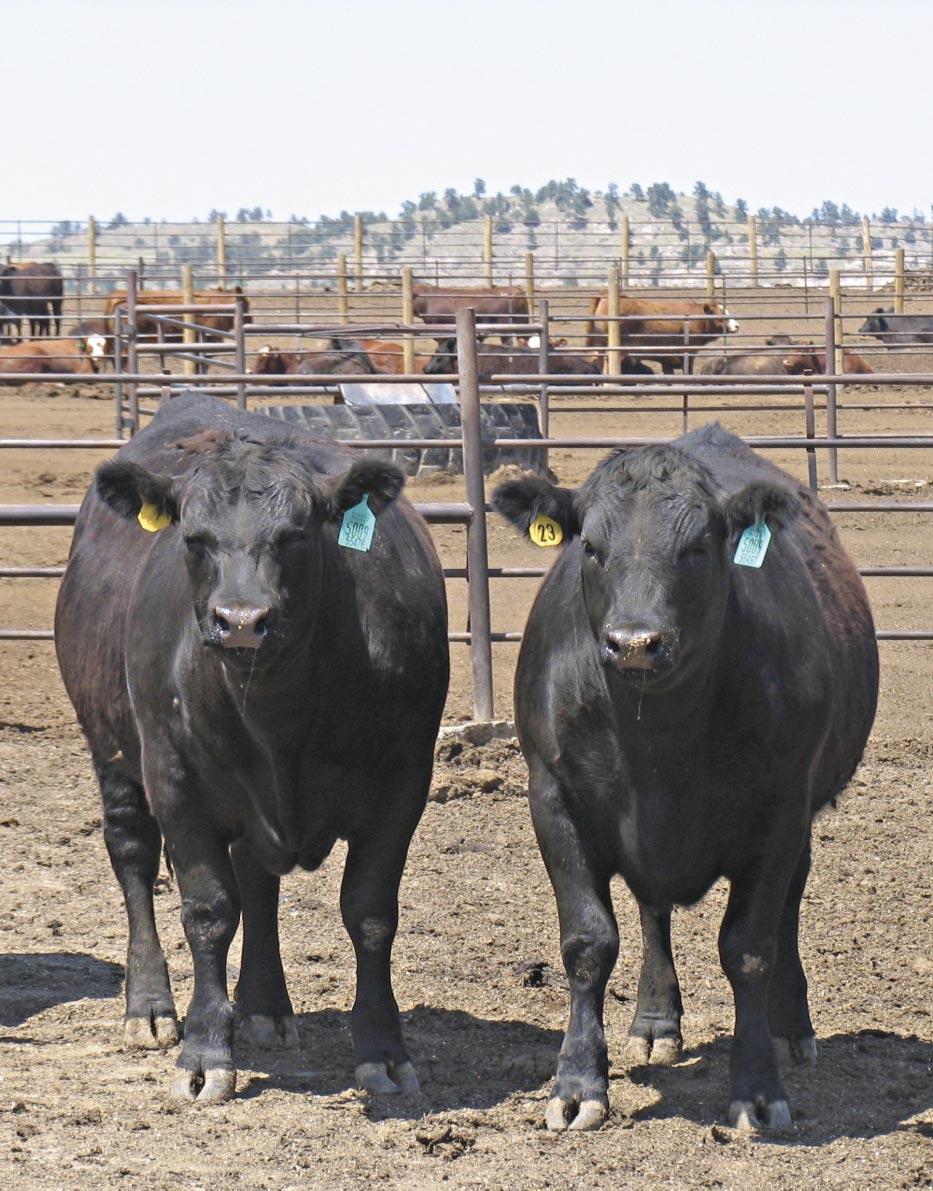
62
no es el único factor. La NIA en el ganado de operaciones de corrales de engorda debe ser un problema complejo. El campo de medicina humana ha sido capaz de crear un síndrome similar a la NIA/SDRA en ovejas, cerdos, perros y otros animales. Los modelos de desafío combinan el estrés calórico con la inhalación de humo, la inhalación de endotoxinas, sepsis por infección bacteriana y el lavado de las superficies pulmonares internas. Si pensamos en la NIA/SDRA en ganado de operaciones de corrales de engorda, vemos la presentación en el verano en ganado con muchos días en alimentación. En el verano, tenemos estrés calórico e inhalación de polvo en nuestro ganado. Nuestro “polvo” no es tierra. El polvo de las operaciones de corrales de engorda es estiércol seco y eso significa que tendremos endotoxinas bacterianas gramnegativas en las partículas que se inhalan. ¿Si hay 60 causas conocidas del SDRA en humanos, por qué pensaríamos que habría una o dos razones claras por las que vemos este síndrome en el ganado? Casi la mitad de los casos de pancreatitis en humanos conducen al SDRA porque la lipasa del páncreas viaja a los pulmones y ataca la bicapa de fosfolípidos de las células intersticiales. Hemos visto de los investigadores que el estrés (independientemente de la causa) creará el síndrome del intestino permeable en el ganado, lo que permitirá que las bacterias y las endotoxinas del intestino entren al torrente sanguíneo. Ya sea que el insulto sea por inhalación o por el torrente sanguíneo, los agentes (virus, bacterias, toxinas) llegan a las células intersticiales de los pulmones y causan inflamación severa y la patología subsiguiente.
Entonces, sabiendo que la NIA/SDRA es un proceso de enfermedad no infecciosa, no es una sorpresa que no se conozca un tratamiento efectivo para la NIA. Experimentamos tasas de caso de fatalidad muy altas en casos verdaderos de NIA/SDRA en ganado de operaciones de corrales de engorda. En humanos, la ventilación y los agentes antiinflamatorios de dosis bajas como la dexametasona se utilizan en el tratamiento. No tenemos ventiladores ni la capacidad de gotear lentamente dexametasona durante varios días en el ganado en operaciones de corrales de engorda. Altas dosis de dexametasona en casos humanos de SDRA resultaron en peores resultados de caso en comparación a no administrar esteroides en lo absoluto. Los resultados de los casos del SDRA en humanos no son muy gratificantes incluso con cuidados de soporte avanzados.
Mientras que la prevención y el tratamiento de la NIA/SDRA son difícil de precisar, es importante tener en

cuenta que una buena crianza de animales y un manejo de ganado de bajo estrés son imperativos. Debemos enfocarnos en áreas de estrés tales como estrés calórico, polvo, estrés nutricional (acidosis, manejo de comederos), estrés fisiológico de muchos días de exposición a dietas altas en energía, manejo del ganado durante el reimplante, espacio de comederos y bebederos, encuentros previos con enfermedades respiratorias y más. Debido a que es difícil diferenciar entre la NIA/SDRA y el CRB, generalmente tratamos con un antibiótico de tiempo corto de retiro y luego proporcionamos cuidado de soporte con buena circulación de aire y sobra, junto con agua fresca y alimento. Algunos animales no podrán llegar al hospital debido al estrés y la disminución de la capacidad pulmonar. Usar un remolque para transportar a estos animales podría salvarles la vida. Continuaremos aprendiendo más a medida que desarrollamos herramientas de diagnostico y utilizamos tecnología para identificar las causas fundamentales sin que nuestros prejuicios nos lleven por el camino equivocado.
El Dr. Dan U. Thomson es un veterinario de bovinos de tercera generación de Clear fi eld, IA. Thomson es propietario/socio en servicios veterinarios e investigación PAC, grupo de consultoría que supervisa el cuidado veterinario, la salud y el bienestar del 20% del ganado en alimentación en los EE.
UU. Es reconocido internacionalmente como líder en el bienestar animal, la producción de ganado de carne y el manejo de la salud del ganado. El programa de investigación del Dr. Thomson a recibido más de $35.3 millones de dólares y $16.0 millones de esos fondos llegando con el como el investigador principal. Thomson es el fundador y presentador de Doc Talk, un programa de televisión veterinario enfocado en la salud del ganado de carne que se transmite a nivel nacional. Ha presentado casi 550 episodios del programa en su undécima temporada que llega a más de 45 millones de hogares en todo el mundo. El Dr. Dan está casado con su esposa Cindy. Tienen cuatro hijas: Kelly, Katelyn, Tory y Sarah. Disfrutan de la cacería de aves con perros de caza, la pesca en el suroeste de Iowa y viajar.

summer 2023 | pacdvms.com 63
36.
Este
artículo está disponible en inglés en la página
JUST LIVIN’ THE DREAM
By Doug Ford, DVM, Production Animal Consultation, & Greg Quakenbush, DVM, Geissler Corp.
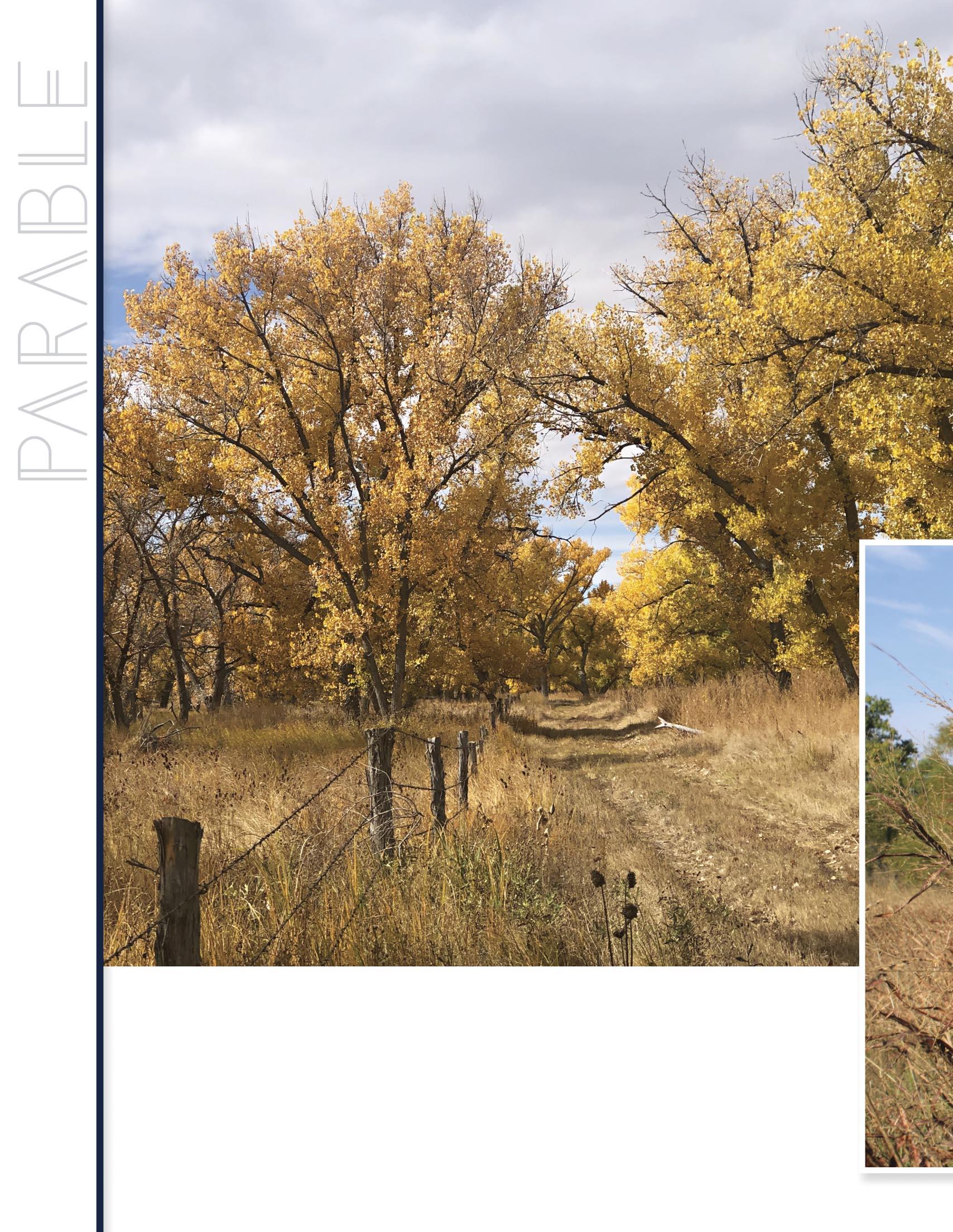
Recently, I had the privilege to read a blog wr itten by Karen Lindberg. Karen is the wife and soulmate of my good friend and business partner, Dr. Nels. Most know that two years ago, the Lindberg family was rocked to its core by a tragic firearms accident involving their teenage son, Nash. This season of darkness obviously created intense emotional turmoil, uncertainty, and anxiety. It has been extremely rewarding to watch this young man battle through his physical challenges with hope, endurance, optimism, opportunity, and a grateful spirit. More powerful to see is the family’s universal focus on personal spiritual growth and a victorious outcome in the wake of their unfortunate situation. The family was faced with two choices... bitter or better. They chose the latter.
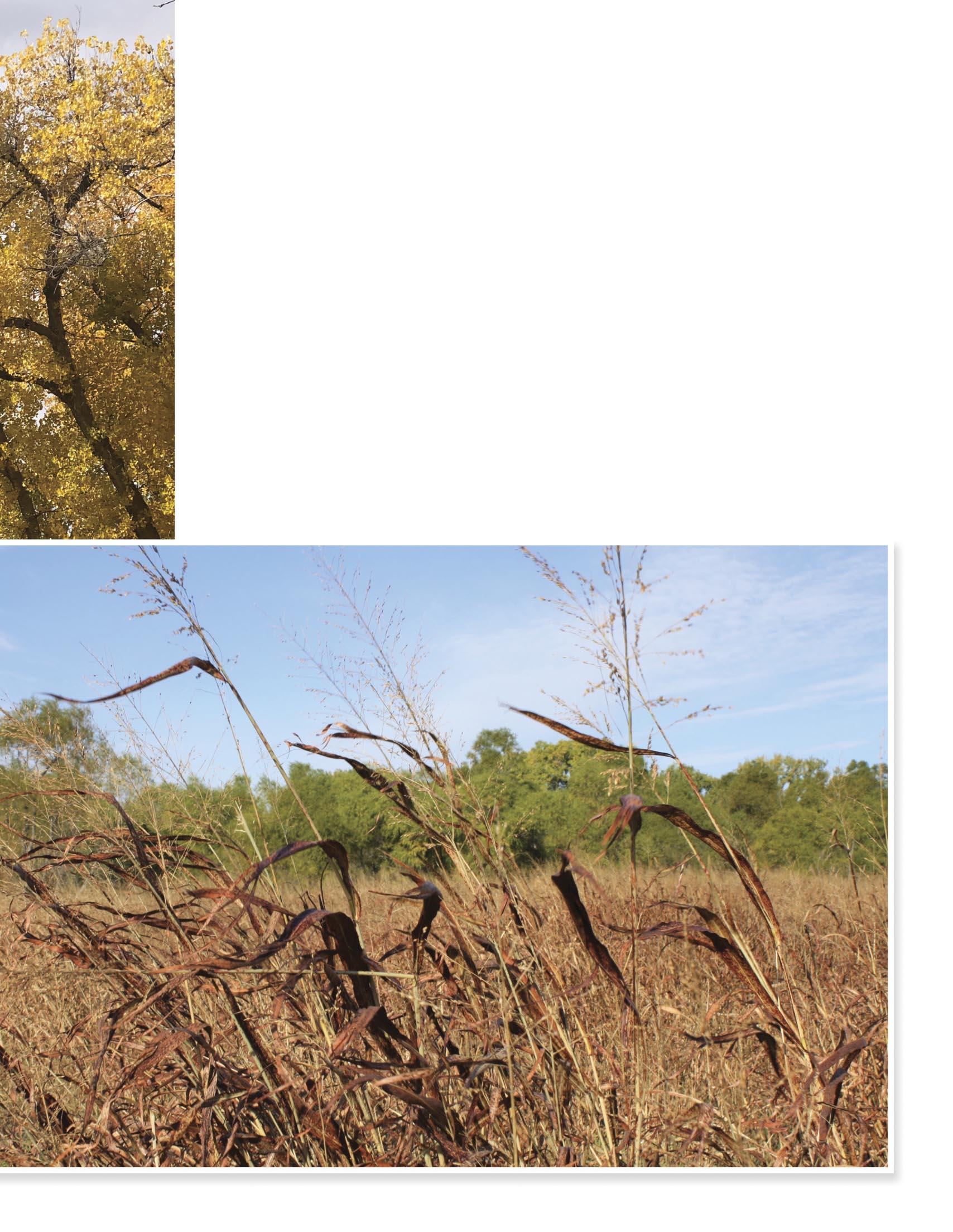
summer 2023 | pacdvms.com 65
I have heard it said that the secret to your future is hidden in your daily routine. Success is directly related to your habits. I have witnessed an intense shift in Karen’s daily priorities. Her seed of obedience has opened the door to the Heavenly Father and the Holy Spirit to become fully engaged in this season of testing.
Karen’s awareness of the Holy Spirit’s involvement is evidenced by the precious divine insights she is experiencing and sharing daily on her blog. Her latest revelation came from a statement she overheard a coach sharing with his team in the huddle: “Value the possession, boys.” At face value, the coach was simply saying, “We have the ball. What are we going to do with the time in our possession?”
You attract what you value and everything has a price, whether it is paid by you or someone else. A recent memory involving the legacy of my deceased father was a sobering reminder of the value of the possession. Over time, I realized I have become a bit undisciplined and neglectful in regard to the art of value assessment and appreciation. Thank you, Karen, for reminding me to value the journey, value time, value family, and value life. To celebrate freedom, health, companionship, and the heavenly Father, his Son, and the Holy Spirit. The next time someone asks you how you are doing, please do not respond sarcastically with “oh, just livin’ the dream,” or “just another day in paradise”. Truly value today.
--------------------

Value the Possession
By Karen Lindberg
Our kids are involved in sports, and we love following them from event to event. Last night, we were out of town watching the high school basketball games and happened to be in a fairly tight gym. As fate would have it, we sat two rows above the bench. From my seat, I had a bird’s eye view of the bench and a front-row seat to the interactions. I love watching people coach –no matter the level of play. I love to watch coaches and managers motivate their players and navigate the highs and lows of a game. It always intrigues me. I never personally excelled in sports enough to qualify as the coaching type, but I do believe that we all coach every single day. I am constantly watching and learning. Last night the game was a close one. At one point, our team was in the huddle during a time-out and I could hear the coach talking to the players about getting the most out of each possession.
That night on the way home, I kept thinking about the coach’s statement – “value the possession”. Clearly, he was talking about the team's possession of the basketball, but that statement resounded in a deeper personal message. How often am I truly valuing the possession? Obviously, I am not talking about material possessions – I am talking about intangible possessions. Time with the ones you love, memories made with your kids, phone conversations with the friends that you haven’t seen in a while, work relationships, etc. How often do we stop to really value the important things while speeding through our day checking off items on our “to do” list?
parable 66
Nels takes special time to have lunch with his parents every Monday. Unfortunately, I haven’t shared a meal with my dad since he passed away in 2015. I pray my husband values that possession; someday he will greatly miss that opportunity. I am blessed to spend many weekends traveling with our daughter watching her play volleyball. Joy pours out of her when she competes, and I realize the years of savoring those moments are limited. I hope I always remember to value that possession. I have been blessed with an extra, unpromised, 915 days with Nash since his accident. I hope to never let a moment slide by that I don’t value that possession. Take a minute and soak that in – VALUE THE POSSESSION!!!
Whether it’s the major moments, something as joyful as a trip to a KSU football game with my dearest family and friends, or a simple hug at the end of the day, I hope I always remember to make the most of it. We live in chaotic times filled with more demands than most of us can meet in a day. My wish is for each of us to stop and
VALUE THE POSSESSION – whatever that possession is.
What can you take a minute to value today? Thank you for the lesson, Coach – this mom certainly needed it!
Digging Deeper
I wonder if the coach that Karen overheard during a time-out had any idea that he was sharing a Biblical truth with his players? Moses was likely the first to put the concept of “value the possession” down on paper when he wrote in Psalm 90:12 (NASB):
“So teach us to number our days, That we may present to You a heart of wisdom.”
The Bible has made it quite clear that in the scheme of eternity, our earthly lives are very, very short. James 4:14 (ESV) tells us:
“yet you do not know what tomorrow will bring. What is your life? For you are a mist that appears for a little time and then vanishes.”
Psalm 39:4-5 (NLT) also speaks to the brevity of our lifetime:
4“Lord, remind me how brief my time on earth will be. Remind me that my days are numbered–how fleeting my life is.

5You have made my life no longer than the width of my hand. My entire lifetime is just a moment to you; at best, each of us is but a breath.”
The verses above instruct that our lifetime lasts as long as a breath or is as momentary as mist or vapor. The only time that we know we have is right now... today. Tomorrow is not guaranteed and one day we will not be given a tomorrow, at least on this earth. We truly should live as if we are dying because we are.
Psalm 90:12 is only one sentence long, but its essential truth is one of life and death. What Moses links together in this verse is the extreme shortness of our
--------------
days or “ tim e ” and “ wisdom ” . Wisdom is important because the choices we make in this life will have eternal implications and consequences. Jonathan Edwards (1703-1758), who is considered by many to be America’s greatest pastor/theologian, wrote a masterful sermon series on the “Preciousness of Time”. The summit of his message was the fact that “Your happy or miserable eternity depends upon what you do today.” Pastor John MacArthur takes a more direct approach with his observation that “Time is short; hell is forever. You don’t have time not to be wise...”. This brings us full circle back to Karen’s overheard instruction, “Value the possession.”
Ephesians 5:15-17 (NASB) again emphasizes the difference in the handling of valuable time between wise men and fools:

15 Therefore be careful how you walk, not as unwise men but as wise, 16making the most of your time, because the days are evil. 17 So then do not be foolish, but understand what the will of the Lord is
In these verses Paul exposes the unforeseen enemy of our short time on earth. It is not too difficult to look around today and see that we are living in crooked, perverse, and evil times. Evil seeks to destroy anything and everything good, and that ultimately shortens all of our lives. The only way to effectively combat the enemy of our souls is to use your precious time to seek peace with God and eternal life, life without end, through Jesus Christ. If you truly want to understand what “the will of the Lord is”, that can be found by investing time in serious Bible study.
When we come to the end of our days, assuming we are given the opportunity to reflect back on our life, what will be our summation? Hopefully, it will be one of minimal regret. In 2 Timothy 4:7, the apostle Paul lays out a summary of his life that should be the goal for all of us: “I have fought the good fight, I have finished the course, I have kept the faith…”. While this final statement of Paul’s closes the book on his earthly life, you will see that in verse 8 he is looking forward to beginning an entirely new volume... eternity!
Doug Ford, DVM is the owner of Beaver Creek Veterinary Clinic in Brush, Colorado. Doug earned his DVM degree from Colorado State University. Brush, Colorado has been his home since graduating from Colorado State. Doug’s practice has been remarkably diverse over 40 years of veterinary medicine. Dogs, cats, cow/calf, feedlot, two sale barns, and spaying thousands of heifers for grass. The last 20 years of practice has been 50% large western dairies and 50% beef cattle (spaying, cow/calf, and feedlots). In 2005, Doug was given the privilege to become one of the six founding members of PAC. Doug and his wife Jan ranch in their “spare” time. They are also heavily involved in a wetland’s development project on the South Platte River near Snyder, Colorado. Doug’s dad used to say, “Get your grades up. Do you want to grow up to be a ditch digger?” Doug had no idea how much fun it would be to play in the dirt with dozers and track hoes. He feels truly blessed and believes that the best days are yet to come.
Greg Quakenbush, DVM is a 1978 graduate of Colorado State University and spent 16 years in large animal practice in Porterville, California. For 19 years, Dr. Q worked for Zoetis (Pfizer) and was Director of the US Cattle Technical Services team. Since 2013, Dr. Q has worked with the Geissler Corporation assisting in the development of new veterinary diagnostic technologies. Dr. Q enjoys Bible study, shooting sports, flyfishing, and being a part-time farmer growing citrus and nuts in the central valley of California.


parable 68
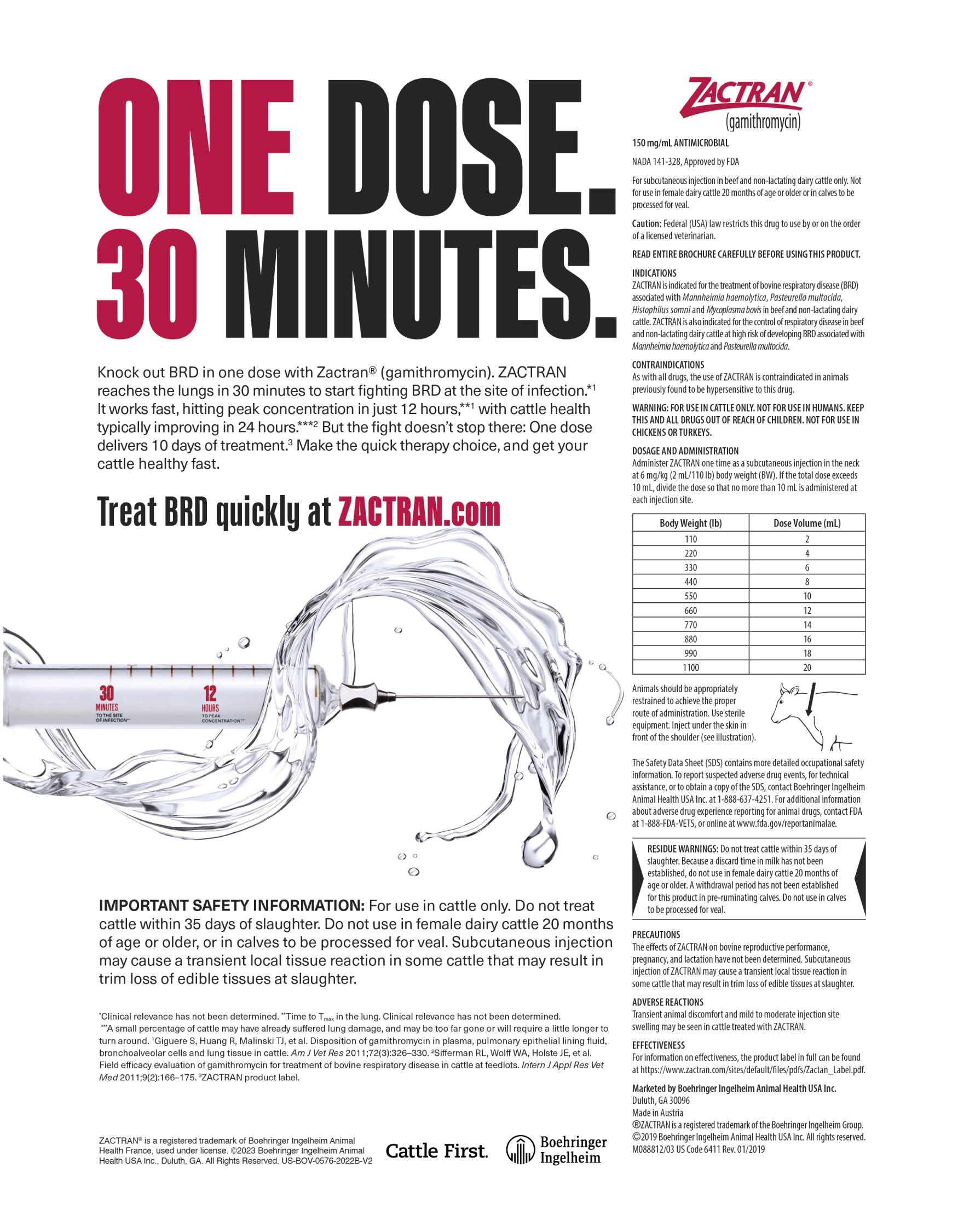
GREEK STEAK PEPPER KABOBS and
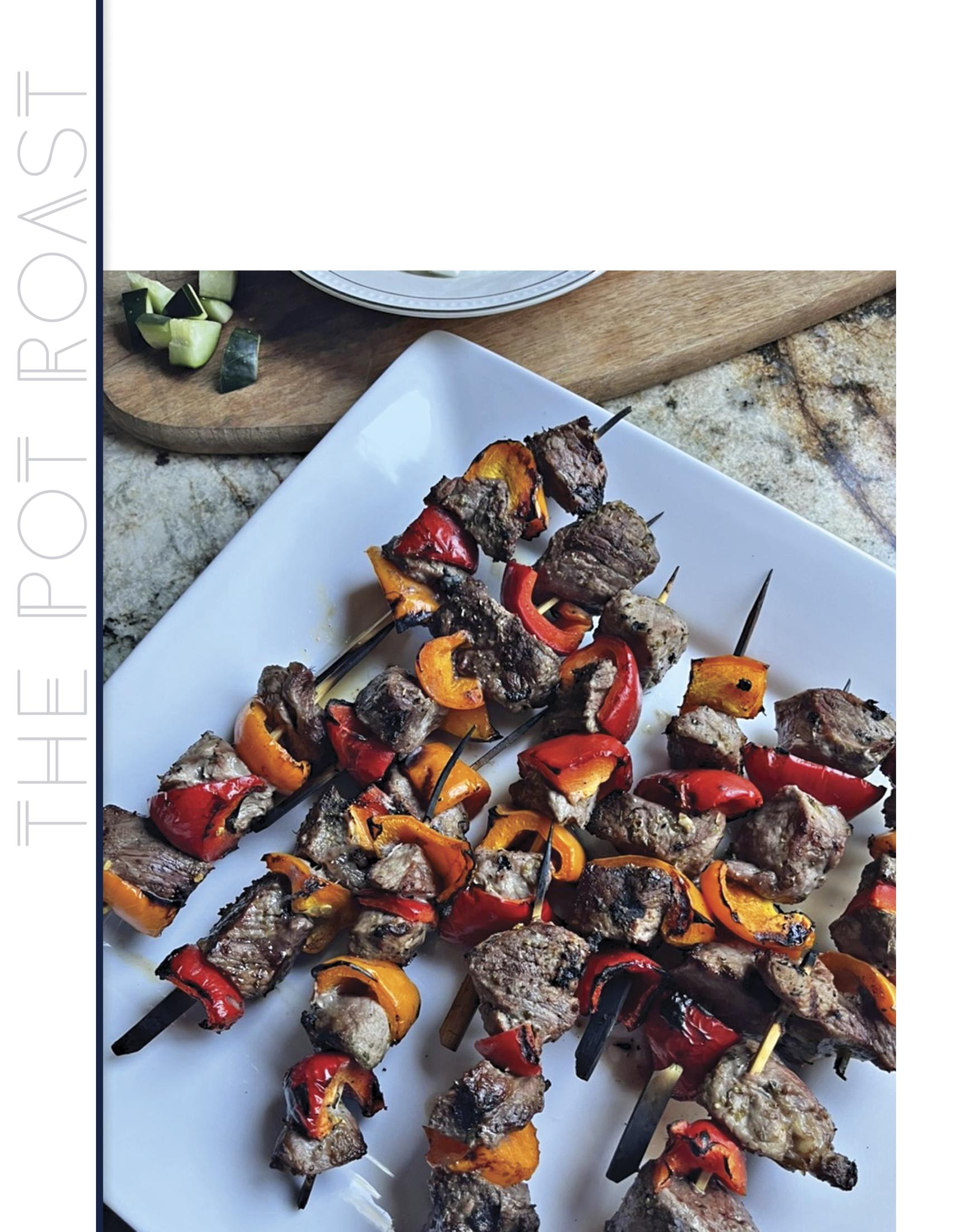
For the skewers
• 2 lb. beef, cubed (New York strip, ribeye, or filet)
• 3 bell peppers, chopped into 1-inch pieces
• 2 tsp. fresh dill
For the marinade
• 2 tbsp. lemon juice
• 3 tbsp. olive oil
• 3 tbsp. fresh dill, chopped
• 3 tbsp. garlic, minced
• 1 tsp. dried oregano
• salt and pepper
Instructions
1. Mix the marinade ingredients and marinate the beef in the refrigerator for at least one hour. I like to whip this up in the morning, marinate it all day, and then grill it for dinner.
2. Make your kabobs by threading the beef and peppers onto skewers. Tip: if using wooden skewers, soak them in water for an hour before making the kabobs so that they won't burn on the grill.
3. Heat the grill to medium-high heat. Grill the kabobs for 10-15 minutes, turning once.
4. Garnish by sprinkling the fresh dill over the warm kabobs.
5. Serve with tzatziki if desired.
Quick and Easy Tzatziki Sauce

Ingredients
• 2 c. plain Greek yogurt
• 1 c. diced cucumber
• 2 tbsp. lemon juice
• 2 cloves garlic, minced
• 1 tbsp. dill, chopped
• salt and pepper to taste
Instructions
1. Stir all of the ingredients together and chill covered until ready to serve.
2. Serve with chopped veggies (peppers, cucumbers, carrots) or pita chips for dipping. Or serve as a sauce for beef kabobs.
summer 2023 | pacdvms.com 71
The Pot Roast
Thank you to Shelby Herrick and The Gingham Apron for sharing your recipe! The Gingham Apron is comprised of five women from one Midwest farm family whose passion is cultivating relationships in their everyday lives. Denise Herrick, center, is the mother and mother-in-law of the other four members of the group. Herrick has been an Iowa farm wife for 46 years. Jenny Herrick, Molly Herrick, and Shelby Herrick (left to right) currently live on their own farms, while Annie Boyd, Denise’s oldest daughter, lives in California where she homeschools her five children. They love to find new ways to celebrate everyday life together. They have a blog and website, theginghamapron.com, where they share how to plan family gatherings, try new recipes, take care of their homes, and educate kids. They cherish their beautiful family farm, time spent with their family, and most of all, their faith in Jesus Christ.

You can find additional recipes and more in their book The Gathering Table Filled with beautiful photography and inspirational writing, The Gathering Table follows this Iowa farm family through a year of gatherings that strengthen relationships, establish and deepen family traditions, and showcase God's gift of great food. With complete menus, easy-to-follow recipes, devotional readings, prayers, and plenty of inspiring and customizable ideas for everything from intimate family gatherings to larger community events, this book will become your go-to resource for entertaining and enjoying life – together!
This wonderful book can be bought online anywhere books are sold or by visiting their website: https://www.theginghamapron.com/ the-gathering-table-book/.
the pot roast 72
If you have a recipe that you would like to feature in The Pot Roast section of Protein Producers, email us at protein.producers@pacdvms.com.
(continued)
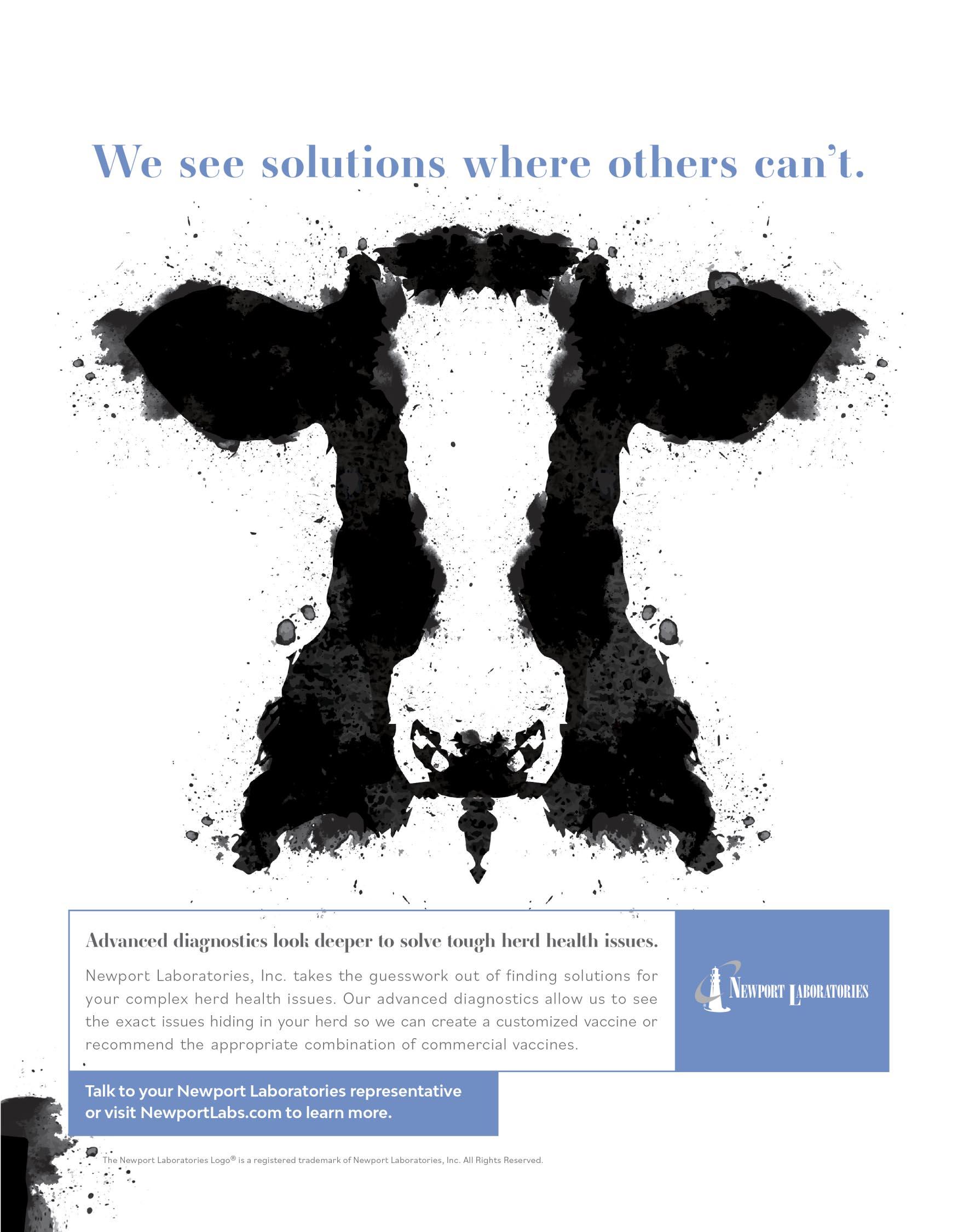

CHUCKLES FROM DOWN UNDER....
Husband: What's for dinner?
Wife: Nothing.
Husband: We had nothing last night.
Wife: I prepared enough for two days.
NB: An Australian ringer is like an American cowboy.

In the outback of Australia, a ringer's wife went into labor in the middle of the night and the doctor was called out to assist with the delivery. As there was no electricity, the doctor handed the father-to-be a lantern and said, “Here, you hold this high so I can see what I am doing.” Soon a baby boy was brought into the world.
“Whoa there,” said the doctor, “don’t be in such a rush to put that lantern down. I think there's another one coming.” Sure enough, within minutes he had delivered a baby girl.
“Hold that lantern up! Don't set it down! There's another one!” said the doctor. Within a few minutes, he’d delivered another baby girl.
“No, no, don’t be in a hurry to put down that lantern. It seems there’s yet another one coming!” cried the doctor.
The ringer scratched his head in bewilderment and asked the doctor, “You reckon it might be the light that's attractin’ ‘em?”
Keep on smiling!
Warm Regards, Jane Sullivan





Production Animal Consultation PO Box 41 Oakley, KS 67748 pacdvms.com To Subscribe Follow us on Social Media @PACVets facebook.com/pacdvms linkedin.com/company/ productionanimalconsultation




















 By Grant Crawford, Ph.D., Merck Animal Health
By Grant Crawford, Ph.D., Merck Animal Health












 By Matt Hille, DVM, MS, PhD, University of Nebraska-Lincoln
By Matt Hille, DVM, MS, PhD, University of Nebraska-Lincoln









 By Dan Thomson, PhD, DVM, Production Animal Consultation
By Dan Thomson, PhD, DVM, Production Animal Consultation





 By Richard Fleeman, Fortreum, LLC
By Richard Fleeman, Fortreum, LLC

















































